Content Area: Later Europe and Americas, 1750–1980 C.E.
Early- and Mid-Twentieth-Century Art
TIME PERIOD: 1900–1980
| Movement | Dates | Major Artists |
| Fauvism | c. 1905 | Matisse |
| Expressionism | 1905–1930s | Kollwitz |
| ■The Bridge | 1905 | Kirchner |
| ■The Blue Rider | 1911 | Kandinsky |
| Cubism | 1907–1930s | Picasso, Braque |
| Constructivism | 1914–1920s | Stepanova |
| Dada | 1916–1925 | Duchamp |
| De Stijl | 1917–1930s | Mondrian |
| Mexican Muralists | 1920s–1930s | Rivera |
| International Style | 1920s–1930s | Le Corbusier |
| Surrealism | 1924–1930s | Kahlo, Oppenheim, Lam |
| Harlem Renaissance | 1930s | Lawrence |
| Abstract Expressionism | Late 1940s–1950s | de Kooning |
| Pop Art | 1955–1960s | Warhol, Oldenburg |
| Color Field Painting | 1960s | Frankenthaler |
| Happenings | 1960s | Kusama |
| Site Art | 1970s–1990s | Lin, Smithson |
| Postmodern | 1975–today | Venturi |
ENDURING UNDERSTANDING: The culture, beliefs, and physical settings of a region play an important role in the creation, subject matter, and siting of works of art.
Learning Objective: Discuss how the culture, beliefs, or physical setting can influence the making of a work of art. (For example: Wright, Fallingwater)
Essential Knowledge:
■Europe and the Americas experience great innovations in economics, industrialization, war, and migration. There is a strong advancement in social issues.
■The avant-garde emerges as artists express themselves in various new movements.
■Freud and Einstein had philosophies that affected the world.
ENDURING UNDERSTANDING: Cultural interaction through war, trade, and travel can influence art and art making.
Learning Objective: Discuss how works of art are influenced by cultural interaction. (For example: Stieglitz, The Steerage)
Essential Knowledge:
■Artists are exposed to diverse, sometimes exotic, cultures as a result of colonial expansion.
ENDURING UNDERSTANDING: Art and art making can be influenced by a variety of concerns including audience, function, and patron.
Learning Objective: Discuss how art can be influenced by audience, function, and/or patron. (For example: Kusama, Narcissus Garden)
Essential Knowledge:
■Commercial galleries become important. Museums open and display art. Art sells to an ever-widening market.
■Artists work for private and public institutions to a sometimes-critical public.
■The importance of academies disappears, and many artists work without patronage.
■Women artists become increasingly important.
ENDURING UNDERSTANDING: Art making is influenced by available materials and processes.
Learning Objective: Discuss how material, processes, and techniques influence the making of a work of art. (For example: Smithson, Spiral Jetty)
Essential Knowledge:
■Architecture is affected by new materials and new modes of construction.
■Artists use new media including photography, lithography, and mass production. Artists also create new monumental works, such as earthworks, as well as ready-made objects.
ENDURING UNDERSTANDING: Art history is best understood through an evolving tradition of theories and interpretations.
Learning Objective: Discuss how works of art have had an evolving interpretation based on visual analysis and interdisciplinary evidence. (For example: Duchamp, Fountain)
Essential Knowledge:
■Audiences and patrons were often hostile to art made in this period. Art history as a science continues to be shaped by theories, interpretations, and analyses applied to new art forms.
HISTORICAL BACKGROUND
With the cataclysmic events of World War I and World War II, as well as the Great Depression, one would never suspect that the early twentieth century was an intensely creative period in the arts. But in nearly every artistic venue—literature, music, dance, and the fine arts—artistic expression flourished. Some movements fed on these very cataclysms for inspiration, others sought to escape the visceral world. For a complex set of reasons—including new technologies, new freedom to express race and gender identities, and the collapse of traditional patronage—the twentieth century proved to be one of the most creative periods in art history.
Patronage and Artistic Life
Early-twentieth-century art was sponsored by extremely cultivated and intellectual patrons who were members of the avant-garde. They saw art as a way to embrace the modern spirit in a cultured way. These influential patrons, like Gertrude Stein, promoted great artists through their sponsorship and connections.
New to the art world is the patronage of museums. It has become standard for a great museum to hire the finest architectural firms to handle expansion projects and turn the museum into a work of art in its own right. Museums also commission works of sculpture and painting from contemporary artists to be showcased in their public spaces.
Not all modern art, however, was greeted with enthusiasm. The Armory Show of 1913, which introduced modern art to American audiences, was generally reviled by American audiences. Picasso’s Les Demoiselles d’Avignon (Figure 22.5) horrified the public. Duchamp’s Fountain (Figure 22.9) even upset the promoters of the gallery who were supposed to allow anyone to be able to exhibit, provided he or she paid the six-dollar admission fee.
One of the results of World War II was the abandonment of Paris as the art capital of the world, a position it had retained since about 1650. New York, the financial and cultural capital of the United States, took over that position, in part because that is where so many fleeing Europeans settled, and in part because it had an active artistic community that was unafraid of experimentation. Mondrian, Duchamp, and Kandinsky moved to New York, not so much to continue their work, most of which was well behind them, but to galvanize modern American artists in what has been called The New York School. De Kooning and Frankenthaler settled here to do their most impressive works.
EARLY- AND MID-TWENTIETH-CENTURY ART
All of the characteristic painter’s tools of expression were under question in the early twentieth century. Color was not only used to describe a setting or an artist’s impression, but also to evoke a feeling and challenge the viewer. Perspective was generally discarded, or violently tilted for dramatic impact. Compositions were forcefully altered in a new and dynamic way.
Most radically, the introduction of pure form, abstraction, became the feature of modern art. Actually, abstract art has always existed, usually in marginal areas of works of art, sometimes in frames or as decorative designs. New is the placement of the abstract form directly in the center of the composition—a statement averring that abstraction has a meaning independent of realistically conveyed representations.
Artists moved beyond the traditional oil-on-canvas approach to great art, and were inspired by photomontage and collage, techniques formerly relegated to children’s art. Such fervent experimentation led Europeans to draw inspiration from African cultures, hitherto ignored or labeled as primitive. Europeans were stimulated by African artists’ ability to create works in geometric, even abstract, terms, unafraid of a lack of conventional reality. This freedom of expression inspired Europeans to rethink traditional representations, sometimes by writing their thoughts down in artistic manifestos, which served as a call to arms for their movement.
The Armory Show, named after the building in New York where it was held, was mounted in 1913 to introduce Americans to the current trends in European art. Many contemporary artists, such as Duchamp and Picasso, were showcased in America for the first time. The show also exhibited prominent American artists.
The adventurous spirit that epitomizes modern painting and architecture also characterizes modern sculpture. Artists used new materials, such as plastic, and new formats, such as collages, to create dynamic compositions. Artists also dangled metal shapes from a ceiling and called them mobiles.
In the Dada movement, artists saw a found object and turn it into a work of art. These ready-mades became works of art simply because the artist said they were.
Fauvism
Fauvism is an art movement that debuted in 1905 at Salon d’Automne in Paris. It was so named because a critic, Louis Vauxcelles, thought that the paintings looked as if they were created by “Wild Beasts.” Fauvism was inspired by Post-Impressionist painters like Gauguin and Van Gogh, whose work was exhibited in Paris around this time. Fauves stressed a painterly surface with broad flat areas of violently contrasting color. Figure modeling and color harmonies were suppressed so that expressive effects could be maximized. Fauvism all but died out by 1908.
Henri Matisse, Goldfish, 1912, oil on canvas, Pushkin Museum of Art, Moscow, Russia (Figure 22.1)

Figure 22.1: Henri Matisse, Goldfish, 1912, oil on canvas, Pushkin Museum of Art, Moscow, Russia
Form
■Strong contrasts of color.
■Thinly applied colors; the white of the canvas shows through.
■Energetic, painterly brushwork.
■Broad patches of color anticipate color-field painting later in the century.
Content
■Still-life painting.
■Compare to Ruysch, Fruits and Insects (Figure 17.11), and Daguerre, Still Life in Studio (Figure 20.8).
Context
■May have been in response to a trip in Morocco, where Matisse noted how the local population would daydream for hours, gazing into goldfish bowls. Form, color, and subject matter were inspired by this trip.
■Admired the relaxed and contemplative lifestyle of the Moroccans, which symbolized a meditative state of mind and a sense of paradise lost to Europeans.
■May have been influenced by the decorative quality of Asian art and diverse cultures from North Africa.
Content Area Later Europe and Americas, Image 131
Web Source http://www.henrimatisse.org/goldfish.jsp
■Cross-Cultural Comparisons for Essay Question 1: Color
–Kngwarreye, Earth’s Creation (Figure 29.13)
–Dedication Page of Blanche of Castile and Louis IX (Figure 12.9b)
–Mori, Pure Land (Figure 29.19)
Expressionism
Inspired by the Fauve movement in Paris, a group of German artists in Dresden gathered around Kirchner and formed Die Brüke, The Bridge, in 1905, so named because they saw themselves as a bridge from traditional to modern painting. They emphasized the same Fauve ideals expressed in violent juxtapositions of color, which so purposely roused the ire of critics and the public.
A second Expressionist group, called Der Blaue Reiter, The Blue Rider, formed in Munich, Germany, in 1911. This group (so named because of an affection the founders had for horses and the color blue) began to forsake representational art and move toward abstraction. Highly intellectual, and filled with theories of artistic representation, artists like Kandinsky saw abstraction as a way of conceiving the natural world in terms that went beyond representation. Kandinsky’s theories were best expressed in his influential essay, Concerning the Spiritual in Art, which outlined his theories on color and form for the modern movement.
Vassily Kandinsky, Improvisation 28 (second version), 1912, oil on canvas, Guggenheim Museum, New York (Figure 22.2)
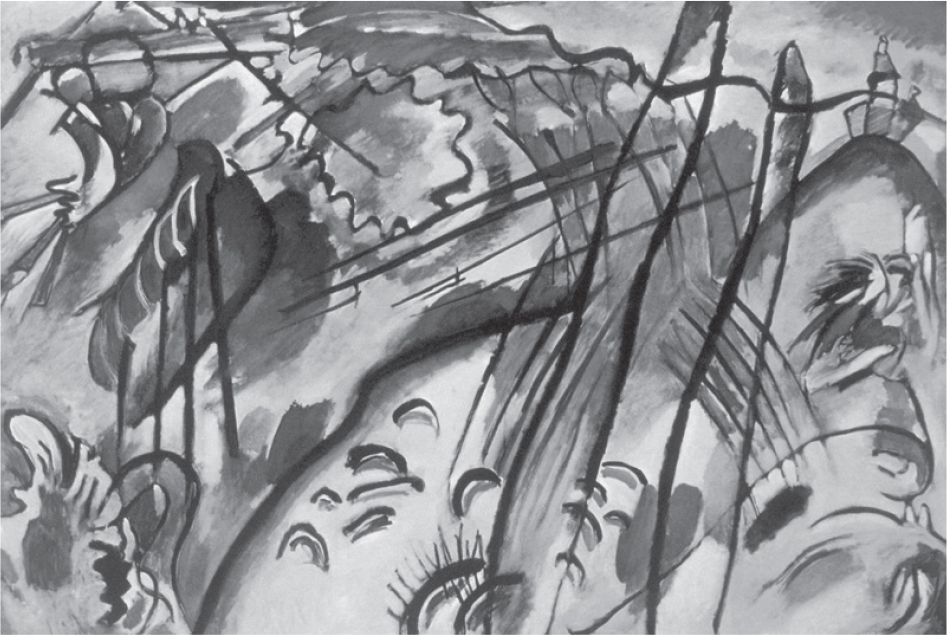
Figure 22.2: Vassily Kandinsky, Improvisation 28 (second version), 1912, oil on canvas, Guggenheim Museum, New York
Form
■Strongly articulated use of black lines.
■Colors seem to shade around line forms.
Content
■Using schematic means, Kandinsky depicts cataclysmic events on the left (boat and waves—a deluge, a serpent, a cannon) and a sense of spiritual salvation on the right (a couple embrace, a candle, a church on a hill).
Context
■Kandinsky wanted the viewer to respond to a painting the way one would to an abstract musical composition: a concerto, a sonata, a symphony.
■The artist felt that sound and color were linked; for example, it was possible to hear color.
■He used words such as “composition” and “improvisation” in the titles of his works, words associated with musical composition.
■Kandinsky’s works have a relationship to atonal music, which was evolving at this time.
■Movement toward abstraction; representational objects suggested rather than depicted.
Content Area Later Europe and Americas, Image 132
Web Source https://www.guggenheim.org/artwork/1861
■Cross-Cultural Comparisons for Essay Question 1: Composition
–David, The Oath of the Horatii (Figure 19.6)
–Ringgold, Dancing at the Louvre (Figure 29.11)
–Giotto, Lamentation (Figure 13.1c)
Ernst Ludwig Kirchner, Self-Portrait as a Soldier, 1915, oil on canvas, Allen Memorial Art Museum, Oberlin College, Oberlin, Ohio (Figure 22.3)
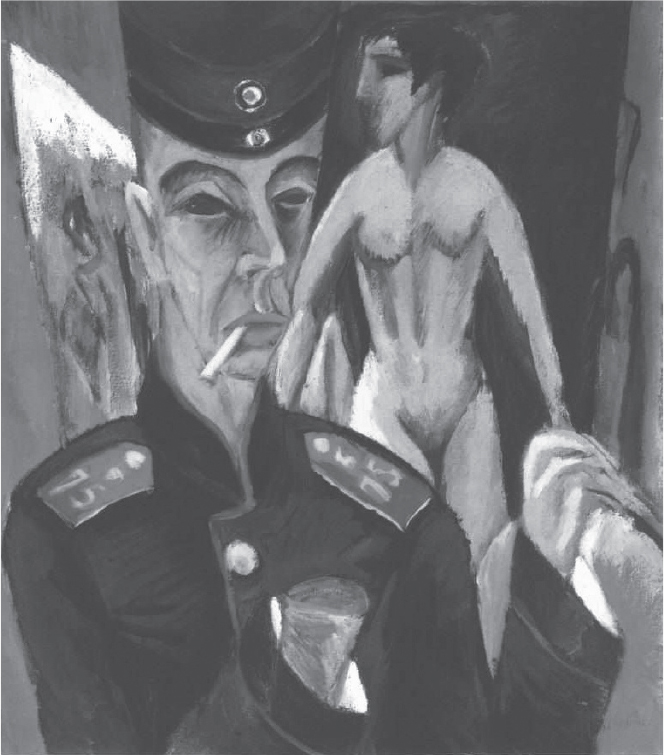
Figure 22.3: Ernst Ludwig Kirchner, Self-Portrait as a Soldier, 1915, oil on canvas, Allen Memorial Art Museum, Oberlin College, Oberlin, Ohio
Form
■Nightmarish quality.
■Colors are nonrepresentational but symbolic, chosen to provide a jarring impact.
■Expressive quality of horrified facial features and grim surroundings.
■Tilted perspective moves things closer to the picture plane.
■Main figure has a drawn face, with a cigarette hanging loosely from his lips.
■The eyes are unseeing and empty, without pupils; the iris reflects the blue of his uniform.
■The bloody stump of a hand represents losses in war, loss of the artist’s ability to paint, his creativity, his artistic vision, and his inspiration.
■Sharp angular lines reinforce a sense of violence and anxiety.
Context
■Kirchner became an “unwilling volunteer,” a driver in the artillery in World War I, to avoid being drafted into the infantry.
■He is wearing the uniform of his field artillery regiment.
■He was declared unfit for service; he had lung problems and weakness and suffered a mental breakdown—there is scholarly debate as to whether he faked these ailments to avoid service.
■This self-portrait was painted during a recuperation period.
■His life was plagued by drug abuse, alcoholism, and then paralysis.
■The artist feared that war would destroy his creative powers.
Content Area Later Europe and Americas, Image 133
Web Source http://www.oberlin.edu/amam/Kirchner_SelfPortrait.htm
■Cross-Cultural Comparisons for Essay Question 1: Self-Portraits
–Rembrandt, Self-Portrait with Saskia (Figure 17.9)
–Vigée Le Brun, Self-Portrait (Figure 19.2)
–Kahlo, The Two Fridas (Figure 22.11)
Käthe Kollwitz, Memorial Sheet for Karl Liebknecht, 1919–1920, woodcut, Private Collection (Figure 22.4)
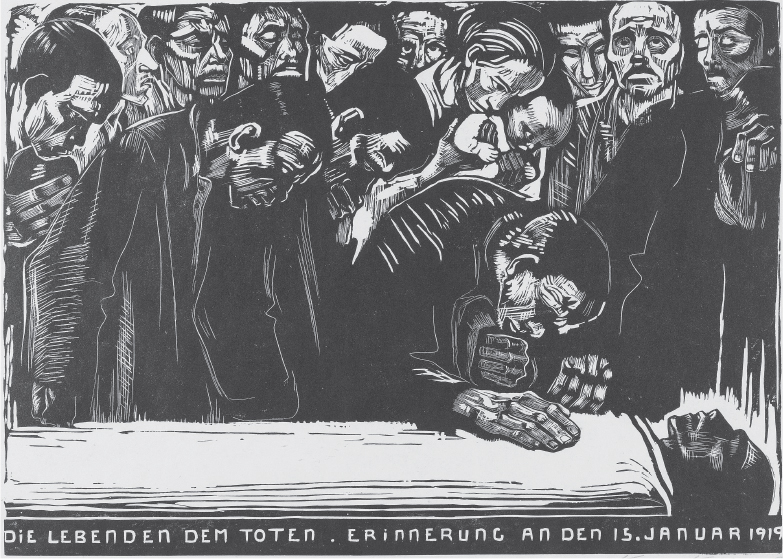
Figure 22.4: Käthe Kollwitz, Memorial Sheet for Karl Liebknecht, 1919–1920, woodcut, Private Collection
Form
■Stark black and white of the woodcut used to magnify the grief.
■Human grief dominates.
Patronage
■Family of Liebknecht asked Kollwitz to memorialize him.
Technique
■Wood-block print.
■Kollwitz used this technique to reinforce the emotions depicted in the scene.
■She liked the “primitive” quality that wood-block prints could render.
Context
■Liebknecht was among the founders of the Berlin Spartacus League, which became the German Communist Party.
■In 1919, Liebknecht was shot to death during a Communist uprising in Berlin called the Spartacus Revolt (named for the slave who led a revolt against the Romans in 73 B.C.E.).
■Liebknecht was held to be a martyr in the Communist cause.
■There are no political references in the woodcut.
■Themes of war and poverty dominate the artist’s oeuvre.
■She often emphasized the theme of women grieving over dead children; her son died in World War I; the artist then became a socialist.
■References to the Lamentation (cf. Giotto, Figure 13.1c).
Content Area Later Europe and Americas, Image 134
Web Source https://www.moma.org/collection/works/71889
■Cross-Cultural Comparisons for Essay Question 1: Memorials
–Taj Mahal (Figures 9.17a, 9.17b)
–The Sphinx and the Pyramids (Figure 3.6a)
–Giotto, Lamentation (Figure 13.1c)
Cubism
Cubism was born in the studio of Pablo Picasso, who in 1907 revealed the first Cubist painting, Les Demoiselles d’Avignon (Figure 22.5). Perhaps influenced by the simple geometries of African masks, then the rage in Paris, Picasso was inspired to break down the human form into angles and shapes, achieving a new way of looking at the human figure from many sides at once. This use of multiple views shows parts of a face, for example, from a number of angles. Cubism is dominated by wedges and facets that are sometimes shaded to simulate depth.
The first phase of Cubism, from 1907–1912, called Analytical, was highly experimental, showing jagged edges and sharp multifaceted lines. The second phase, after 1912, called Synthetic Cubism, was initially inspired by collages and found objects and featured flattened forms. The last phase, Curvilinear Cubism, in the 1930s, was a more flowing rounded response to the flattened and firm edges of Synthetic.
Pablo Picasso, Les Demoiselles d’Avignon, 1907, oil on canvas, Museum of Modern Art, New York (Figure 22.5)
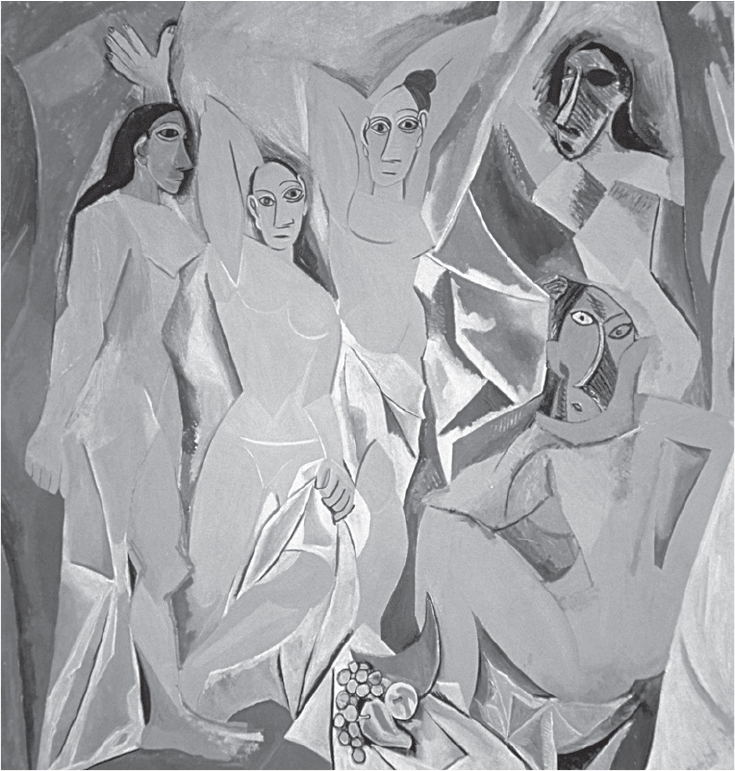
Figure 22.5: Pablo Picasso, Les Demoiselles d’Avignon, 1907, oil on canvas, Museum of Modern Art, New York
Content
■Depicts five prostitutes in a bordello in Avignon Street in Barcelona, each posing for a customer.
■Poses are not traditionally alluring but awkward, expressionless, and uninviting.
Form
■The three on the left are more conservatively painted; the two on right more radical; reflects a dichotomy in Picasso.
■Multiple views are expressed at the same time.
■Depth is limited, but ambiguous and ever shifting.
■The painting has semitransparent passages.
Context
■This is the first cubist work, influenced by late Cézanne and perhaps African masks (faces on the right) and ancient Iberian sculpture (figure on the left).
■Influenced by Gauguin’s so-called Primitivism.
Content Area Later Europe and Americas, Image 126
Web Source https://www.moma.org/collection/works/79766
■Cross-Cultural Comparisons for Essay Question 1: Group Compositions
–Velázquez, Las Meninas (Figure 17.7)
–Basquiat, Horn Players (Figure 29.5)
–Sultan Muhammad, Court of the Gayumars (Figure 9.9)
Georges Braque, The Portuguese, 1911, oil on canvas, Art Museum, Basel, Switzerland (Figure 22.6)

Figure 22.6: Georges Braque, The Portuguese, 1911, oil on canvas, Art Museum, Basel, Switzerland
Form
■Braque rejected naturalistic and conventional painting.
■Fractured forms; breaking down of objects into smaller forms.
■Clear-edged surfaces at the front of the picture plane, not recessed in space.
■Nearly monochrome.
Context
■Analytical Cubism; Braque worked in concert with Pablo Picasso to develop this style.
■This is not a portrait of a Portuguese musician, but rather an exploration of shapes.
■The only realistic elements are the stenciled letters and numbers; perhaps they suggest a dance hall poster behind the guitarist, a café-like atmosphere.
Content Area Later Europe and Americas, Image 130
Web Source https://www.artsy.net/artwork/georges-braque-the-portuguese
■Cross-Cultural Comparisons for Essay Question 1: Image and Word
–Sultan Muhammad, Court of the Gayumars (Figure 9.9)
–Bichitr, Jahangir Preferring a Sufi Shaikh to Kings (Figure 23.9)
–Basquiat, Horn Players (Figure 29.5)
Constantin Brancusi, The Kiss, original 1907–1908, stone, Philadelphia Museum of Art, Philadelphia (Figure 22.7)
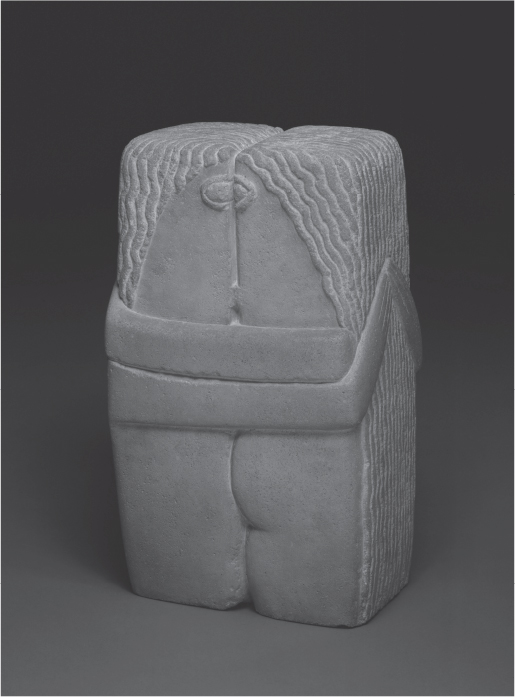
Figure 22.7: Constantin Brancusi, The Kiss, original 1907–1908, stone, Philadelphia Museum of Art, Philadelphia
Form
■Symbolic, almost Cubist rendering of the male and female bodies.
■Simplified carving.
■Intertwined and enveloped figures.
■Interlocked forms; fused bodies.
■Two eyes become one, almost Cyclops-like.
■Rough surface contributes to a feeling of naturalism; this is an artistic break from the high-polish effect of past sculpture.
Patronage
■Requested by John Quinn, Brancusi’s patron in New York, who admired the small plaster version of The Kiss in the collection of the artist Walter Pach.
Context
■Brancusi worked in Rodin’s studio; cf. Rodin’s The Kiss.
■This is the fourth stone version of this subject:
–First version was one of Brancusi’s earliest efforts at stone carving (Craiova Art Museum, Romania).
–Second version (a plaster cast) was exhibited at the Armory Show.
–Third version used as a tombstone in Montparnasse Cemetery in Paris over the body of a suicide victim: a young Russian anarchist.
•The artist was asked by a friend of the deceased, who had jilted her, for a marker for her grave.
•The artist said take what you want; he took this work.
■There may be many more undocumented versions.
Content Area Later Europe and Americas, Image 129
Web Source http://www.philamuseum.org/collections/permanent/51306.html
■Cross-Cultural Comparisons for Essay Question 1: Schematic Human Forms
–Anthropomorphic stele (Figure 1.2)
–Female deity from Nukuoro (Figure 28.2)
–Ikenga (shrine figure) (Figure 27.10)
Photo-Secession
From 1902 through 1917 Alfred Stieglitz’s gallery, called Gallery 291, was the most progressive gallery in the United States, showcasing photographs as works of art beside avant-garde European paintings and modern American works.
Alfred Stieglitz, The Steerage, 1907, photogravure, Private Collection (Figure 22.8)
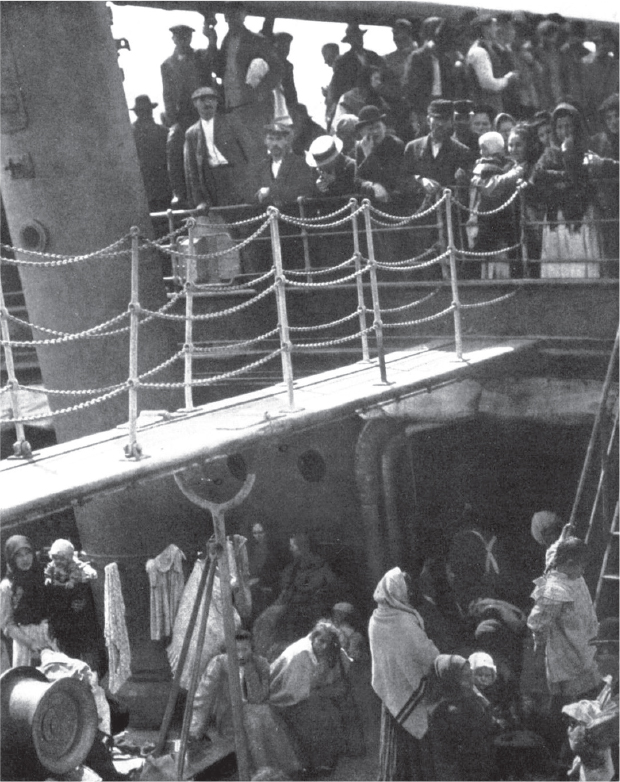
Figure 22.8: Alfred Stieglitz, The Steerage, 1907, photogravure, Private Collection
Form
■Interested in compositional possibilities of diagonals and lines acting as framing elements.
■Diagonals and framing effects of ladders, sails, steam pipes, etc.
■Stieglitz photographed the world as he saw it; he arranged little, and allowed people and events to make their own compositions.
■Influenced by experimental European painting; compared with a Cubist drawing by Picasso, Cubist-like in arrangement of shapes and tonal values.
Content
■Steerage: the part of a ship reserved for passengers with the cheapest tickets.
■Depicts the poorest passengers on a ship traveling from the United States to Europe in 1907; they were allowed out for air for a limited time.
■Some may have been people turned away from entrance to the United States; more likely, they were artisans whose visas had expired and were returning home.
Context
■The work depicts social divisions in society.
■Published in October 1911 in Camera Work.
Content Area Later Europe and Americas, Image 127
Web Source http://www.metmuseum.org/toah/works-of-art/33.43.419/
■Cross-Cultural Comparisons for Essay Question 1: Disadvantaged Persons
–Turner, Slave Ship (Figure 20.5)
–Courbet, The Stone Breakers (Figure 21.1)
–Rodin, The Burghers of Calais (Figure 21.15)
Dada
Dada, a nonsense word that literally means “hobby horse,” is a term directed at a movement in Zurich, Cologne, Berlin, Paris, and New York from 1916 to 1925. Disillusioned by the useless slaughter of World War I, the Dadaists rejected conventional methods of representation and the conventional manner in which they were exhibited. Oil and canvas were abandoned. Instead, Dadaists accepted ready-mades as an art form, and often did their work on glass. Dadaists challenged the relationship between words and images, often incorporating words prominently in their works. The meaning of Dada works is frequently contingent on location or accident. If a glass should shatter, as a few did, it was hailed as an enhancement, acknowledging the hand of chance in this achievement. In sum, Dada accepts the dominance of the artistic concept over the execution.
Marcel Duchamp, Fountain, original 1917, this version 1950, readymade glazed sanitary china with black paint, Philadelphia Museum of Art, Pennsylvania (Figure 22.9)
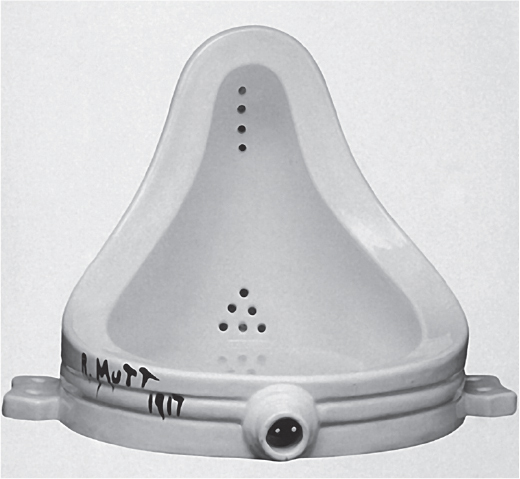
Figure 22.9: Marcel Duchamp, Fountain, original 1917, this version 1950, readymade glazed sanitary china with black paint, Philadelphia Museum of Art, Pennsylvania
Form
■Ready-made sculpture; actually a found object that Duchamp deemed to be a work of art.
■Signed by the “artist,” R. Mutt, a pun on the Mutt and Jeff comic strip and Mott Iron Works.
■Item purchased from a sanitary-ware supplier and submitted to the Society of Independent Artists, a group that Duchamp helped to found.
Function and History
■Entered in an unjuried show, the work was refused—narrowly voted out by the organizers.
■Thought to be indecent, not fit to show women.
■Duchamp resigned in protest.
■It is not fully understood why Duchamp resigned; it may have come from his experience exhibiting an earlier work Nude Descending a Staircase No. 2 to the Salon des Indépendants in Paris; although the work was illustrated in the show’s catalog, Duchamp was asked to remove it a few days before the opening.
■He removed the object but felt betrayed; said it was a turning point in his life.
■Fountain can be seen as an experimental replay by Duchamp, testing the commitment of the new American Society to freedom of expression and tolerance of new conceptions about art.
Context
■The title is a pun: a fountain spouts liquid, a urinal collects it.
■The placing of the urinal upside down is an added irony.
■The rotation of Fountain may symbolize seeing something familiar from a new perspective.
■The original is now lost; Duchamp oversaw the “remaking” of a few models in 1964.
Content Area Later Europe and Americas, Image 144
Web Source http://www.tate.org.uk/art/artworks/duchamp-fountain-t07573
■Cross-Cultural Comparisons for Essay Question 1: Recycling Objects into Art
–Camelid sacrum (Figure 1.1)
–Tuffery, Pisupo Lua Afe (Corned Beef 2000) (Figure 29.16)
–Quick-to-See-Smith, Trade (Figure 29.12)
Surrealism
Inspired by the psychological studies of Freud and Jung, Surrealists sought to represent an unseen world of dreams, subconscious thoughts, and unspoken communication. Starting with the theories of Andre Breton in 1924, the movement went in two directions: The abstract tradition of biomorphic and suggestive forms, and the veristic tradition of using reality-based subjects put together in unusual ways. Those who seek to understand the inscrutable world of Surrealism by looking at a painting’s title will find themselves even more confused than when they started. Surrealism is meant to puzzle, challenge, and fascinate; its sources are in mysticism, psychology, and the symbolic. It is not meant to be clearly understood and didactic.
Meret Oppenheim, Object (Le Dejéuner en fourrure), 1936, fur-covered cup, saucer, and spoon, Museum of Modern Art, New York (Figure 22.10)
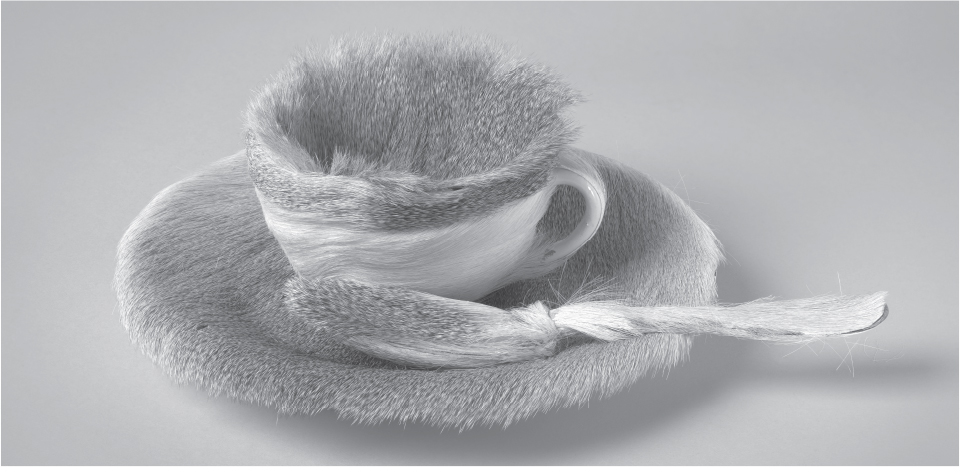
Figure 22.10: Meret Oppenheim, Object (Le Dejéuner en fourrure), 1936, fur-covered cup, saucer, and spoon, Museum of Modern Art, New York
Form
■An assemblage.
Context
■Said to have been done in response to Picasso’s claim that anything looks good in fur; Oppenheim said to respond, “Even this cup and saucer?”
■Erotic overtones.
■Combination of unalike objects: fur-covered teacup, saucer, and spoon. The tea cup was purchased at a department store; the fur is the pelt of a Chinese gazelle.
■A contrast of textures: fur delights the touch, not the taste; cups and spoons are meant to be put in the mouth.
■Oppenheim did not title the work, but the Surrealist critic, Andre Breton, called the piece Le Déjeneur en fourrure, or Luncheon in Fur, a title that references Édouard Manet’s Luncheon on the Grass (Le Déjeneur sur l’herbe) as well as the erotic novel by Leopold von Sacher-Masoch called Venus in Furs.
■Chosen by visitors to a Surrealist show in New York as the quintessential Surrealist work of art.
■Because fame came to Oppenheim so young (she was twenty-two when she produced this work), it inhibited her growth as an artist.
Content Area Later Europe and Americas, Image 138
Web Source https://www.moma.org/collection/works/80997?locale=en
■Cross-Cultural Comparisons for Essay Question 1: Traditional Objects Reused
–Weiwei, Sunflower Seeds (Figure 29.27)
–Ringgold, Dancing at the Louvre (Figure 29.11)
–Bing, Book from the Sky (Figure 29.8)
Frida Kahlo, The Two Fridas, 1939, oil on canvas, Museum of Modern Art, Mexico City (Figure 22.11)
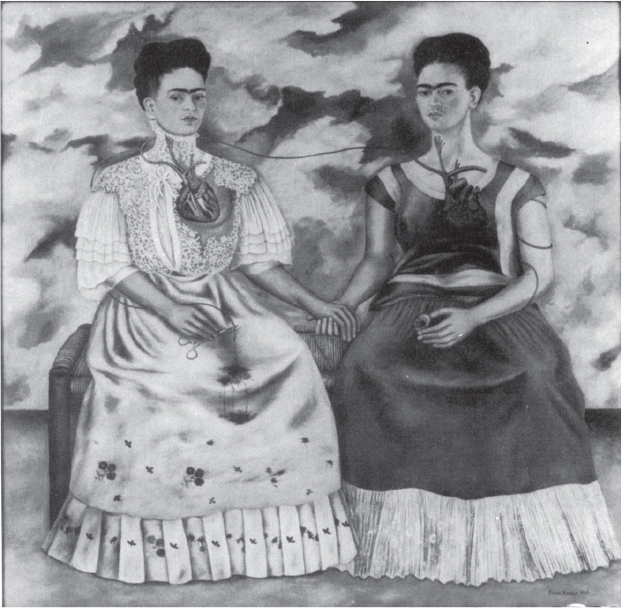
Figure 22.11: Frida Kahlo, The Two Fridas, 1939, oil on canvas, Museum of Modern Art, Mexico City
Content
■On the left: Kahlo is dressed as a Spanish lady in white lace, linking her to a European heritage.
■On the right: Kahlo dressed as a Mexican peasant—the stiffness and provincial quality of Mexican folk art was a direct inspiration for the artist.
■Behind is a barren landscape; two figures sit against a wildly active sky.
Context
■There is a juxtaposition to two self-portraits.
■Kahlo’s two hearts are joined together by veins that are cut by scissors at one end and lead to a portrait of her husband, artist Diego Rivera, at the other; painted at the time of their divorce.
■The vein acts as an umbilical cord; symbolism: Rivera as both husband and son.
■Blood on her lap suggests many abortions and miscarriages; also, surgeries related to her health issues.
■Kahlo rejected the label Surrealism for her artwork.
Content Area Later Europe and Americas, Image 140
Web Source http://www.pbs.org/weta/fridakahlo/worksofart/
■Cross-Cultural Comparisons for Essay Question 1: Self-Portraits
–Bichitr, Jahangir Preferring a Sufi Shaikh to Kings (Figure 23.9)
–Rembrandt, Self-Portrait with Saskia (Figure 17.9)
–Vigée Le Brun, Self-Portrait (Figure 19.2)
Wifredo Lam, The Jungle, 1943, gouache on paper mounted on canvas, The Museum of Modern Art, New York (Figure 22.12)
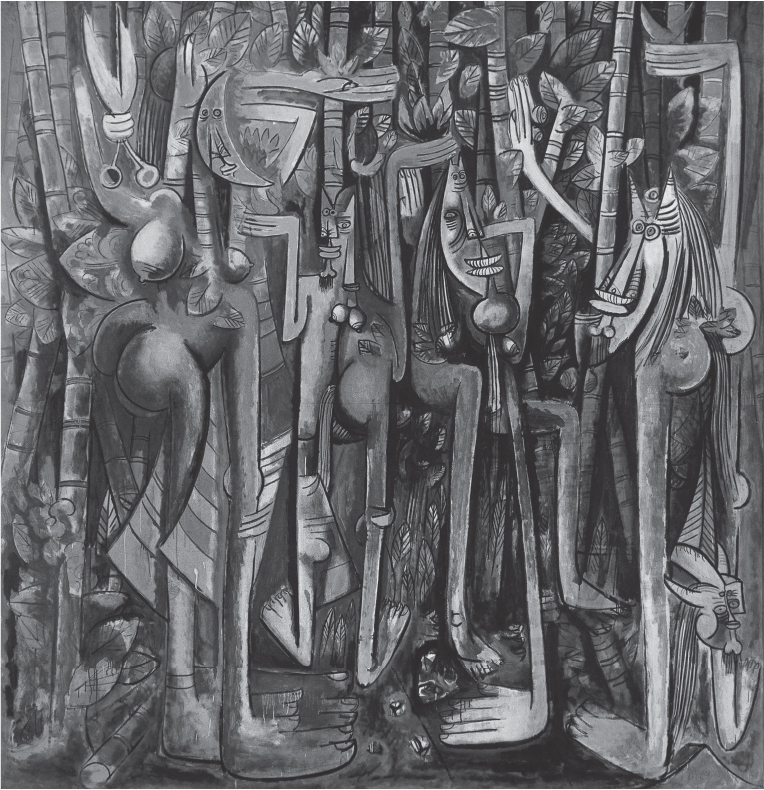
Figure 22.12: Wifredo Lam, The Jungle, 1943, gouache on paper mounted on canvas, The Museum of Modern Art, New York
Form
■Crescent-shaped faces suggest African masks and the god Elegua.
■Rounded backs, thin arms and legs, pronounced hands and feet.
■Long vertical lines suggest sugarcane, which is grown in fields, not jungles.
Context
■Cuban-born artist whose career took him to Europe and the United States.
■The artist was interested in Cuba’s mixture of Hispanic and African cultures.
■This work was “intended to communicate a psychic state.”
■The work addresses the history of slavery in colonial Cuba.
■Influences include African sculpture; Cubist works; Surrealist paintings (Lam was a member of the Surrealist movement in Paris).
■The painting contrasts a Cuban landscape with a tourist image of Cuba as a tropical paradise.
Content Area Later Europe and Americas, Image 142
Web Source https://www.moma.org/collection/works/34666
■Cross-Cultural Comparisons for Essay Question 1: Art Inspired from Diverse Cultural Traditions
–Petra (Figures 6.9a, 6.9b)
–Golden Haggadah (Figures 12.10a, 12.10b, 12.10c)
–Kngwarreye, Earth’s Creation (Figure 29.13)
Constructivism
Constructivists experimented with new architectural materials and assembled them in a way devoid of historical reference. Beginning in 1914, Stepanova and others saw the new Russia as an idealistic center removed from historical reference and decoration. Influenced by the Cubists, Constructivists designed buildings with no precise façades. Emphasis was placed on the dramatic use of the materials used to create the project. Constructivists were particularly influenced by the modern industrial complexes that dominated human employment in the early twentieth century.
Varvara Stepanova, Illustration from The Results of the First Five-Year Plan, 1932, photomontage, Museum of the Revolution, Moscow, Russia (Figure 22.13)
Form and Function
■Graphic art for political and propaganda purposes; a photomontage.
■Red color dominates—the color of Communist Soviet Union.
■A large portrait of Lenin dominates; although deceased, his image is used to stimulate patriotism.
■Masses of people below illustrate the popularity of the Five-Year Plan.
■CCCP (Союз Советских Социалистических Республи) is a Russian abbreviation for the Soviet Union.
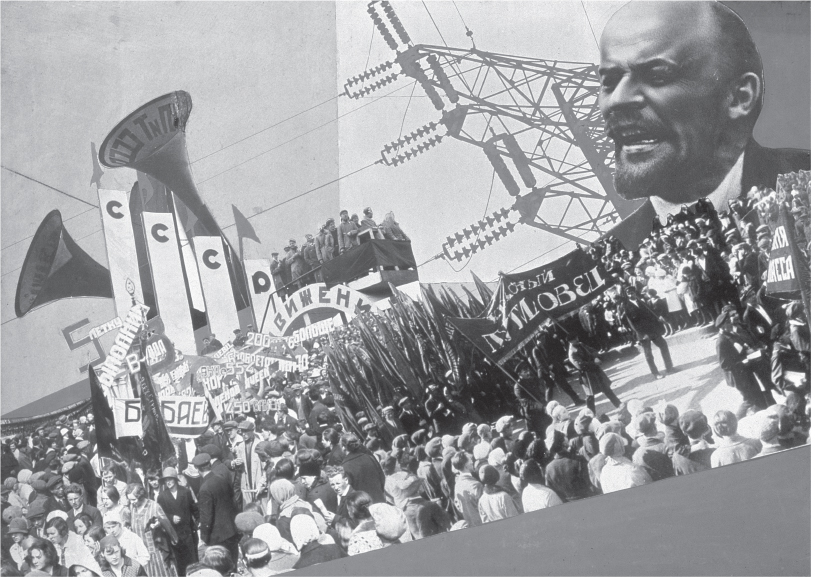
Figure 22.13: Varvara Stepanova, Illustration from The Results of the First Five-Year Plan, 1932, photomontage, Museum of the Revolution, Moscow, Russia
Context
■Stepanova was one of the main figures in the Russian avant-garde movement.
■Influenced by Cubism and Futurism.
■Five-Year Plan:
–Soviet practice of increasing agricultural and industrial output in five years.
–Launched in 1928, considered complete in 1932.
–Emphasis on growth of heavy industry rather than consumer goods.
–Huge increases in electrical output (dominant industrial symbol in the work).
–The failures of the five-year plan are overlooked in this representation (famine, extreme poverty, political oppression); instead it is a propaganda statement of the virtues of the Stalinist state.
Content Area Later Europe and Americas, Image 137
Web Source http://www.tate.org.uk/learn/online-resources/glossary/c/constructivism
■Cross-Cultural Comparisons for Essay Question 1: Social Commentary
–Delacroix, Liberty Leading the People (Figure 20.4)
–Neshat, Rebellious Silence (Figure 29.14)
–Walker, Darkytown Rebellion (Figure 29.21)
De Stijl
De Stijl, a movement symbolized by the Dutch painter Mondrian, reached its height between 1917 and the 1930s. At its purest, De Stijl paintings are completely abstract; even the titles make no reference to nature. They are painted on a white background and use black lines to shape the rectangular spaces. Only the three primary colors are used: red, yellow, and blue, and they are painted without modulation. Lines can only be placed perpendicularly—diagonals are forbidden. Mondrian called this artistic style neoplasticism.
Piet Mondrian, Composition with Red, Blue and Yellow, 1930, oil on canvas, Kunsthaus, Zurich (Figure 22.14)
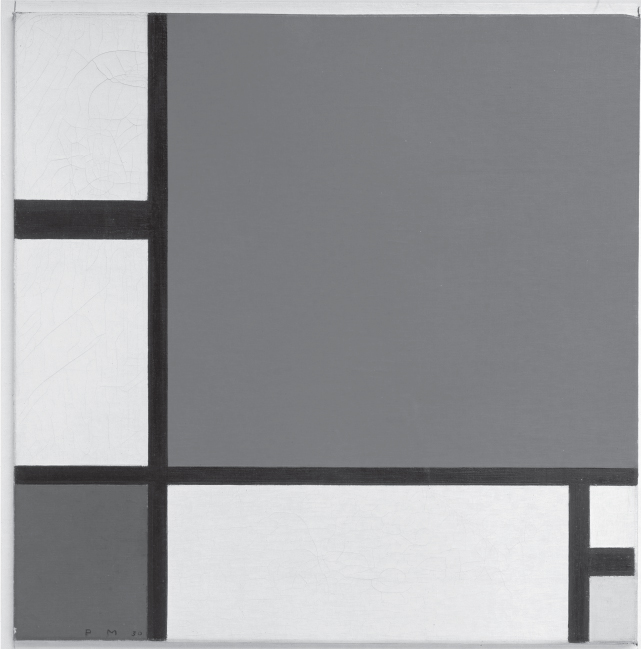
Figure 22.14: Piet Mondrian, Composition with Red, Blue and Yellow, 1930, oil on canvas, Kunsthaus, Zurich
Form
■Only primary colors used—red, yellow, and blue—plus the neutral colors, white and black.
■Severe geometry of form; only right angles; grid-like forms.
■No shading of colors.
Context
■The artist is interested in the material properties of paint, not naturalistic depictions.
■The artist expresses ideas using abstract elements—that is, line and color.
■Influenced by Cubism.
Content Area Later Europe and Americas, Image 136
Web Source http://www.tate.org.uk/learn/online-resources/glossary/d/de-stijl
■Cross-Cultural Comparisons for Essay Question 1: Composition
–Su-nam, Summer Trees (Figure 29.6)
–Navigation chart (Figure 28.3)
–Martínez, Black-on-black ceramic vessel (Figure 26.14)
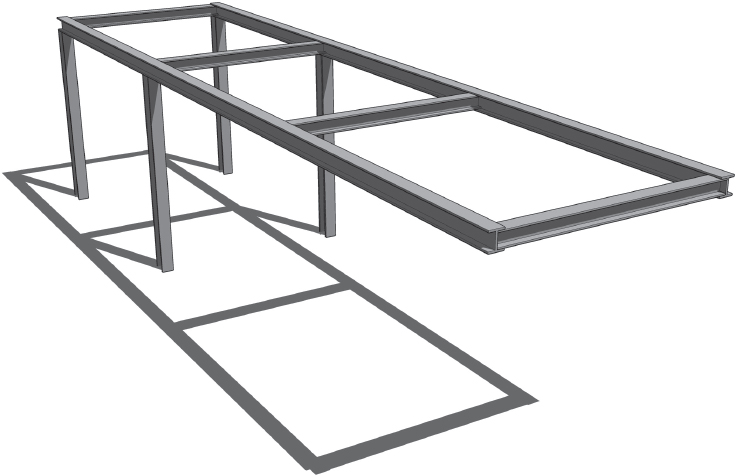
Figure 22.15: Cantilever
EARLY- AND MID-TWENTIETH-CENTURY ARCHITECTURE
Early-twentieth-century architecture is marked by a complete embrace of technological advances. Ferroconcrete construction, particularly in Europe, allowed for new designs employing skeleton frameworks and glass walls. The cantilever (Figure 22.15) helped push building elements beyond the solid structure of the skeletal framework.
In general, architects avoided historical associations: There are few columns and fewer flying buttresses. Architects prefer clean sleek lines that stress the building’s underlying structure and emphasize the impact of the machine and technology.
The Prairie Style
The Prairie School of architecture concerns a group of architects working in Chicago from 1900 to 1917, of which Frank Lloyd Wright is the most famous. They rejected the idea that buildings should be done in historic styles of architecture; however, they insisted that they should be in harmony with their site. Wright employed complex irregular plans and forms that seemed to reflect the abstract shapes of contemporary painting: Rectangles, triangles, squares, and circles. Stylized botanical shapes were particularly prized. Wright used cantilever construction to have porches and terraces extend out from the main section of a structure (Figure 22.15). Cantilevers give the impression of forms hovering over open space, held up by seemingly weightless anchors.
The organic qualities of the materials—concrete with pebble aggregate, sand-finished stucco, rough-hewn lumber, and natural woods—were believed to be the most beautiful. The horizontal nature of the prairie is stressed in the alignment of these houses. Although Fallingwater was designed well after the Prairie School peaked, it still reflects many of the same characteristics.
Frank Lloyd Wright, Fallingwater, 1936–1939, reinforced concrete, sandstone, steel, and glass, Bear Run, Pennsylvania (Figures 22.16a, 22.16b, and 22.16c)

Figure 22.16a: Frank Lloyd Wright, Fallingwater, 1936–1939, Bear Run, Pennsylvania
Form
■Cantilevered steel-supported porches extend over a waterfall.
■The accent is on horizontal lines—as opposed to the verticality of much of twentieth-century architecture.
■The architecture is in harmony with the site.
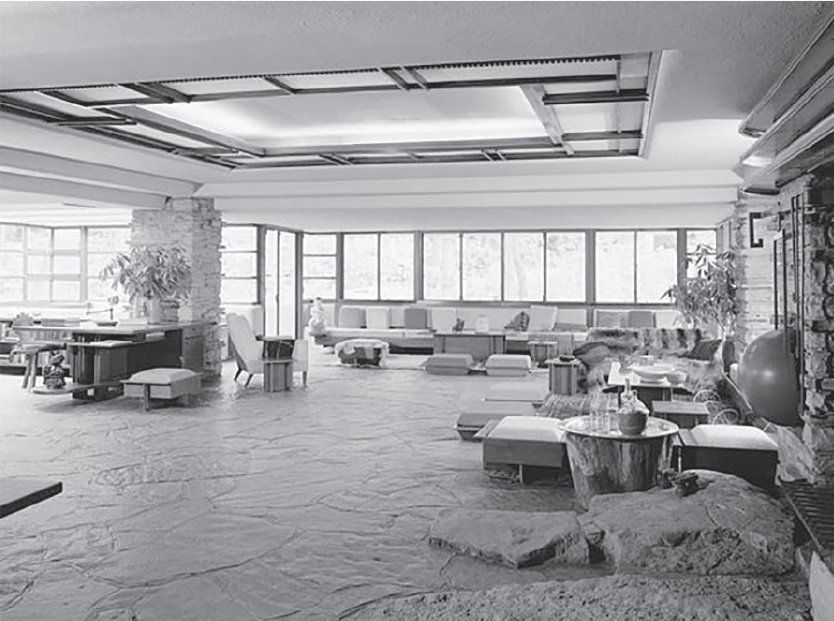
Figure 22.16b: Frank Lloyd Wright, Fallingwater, living room
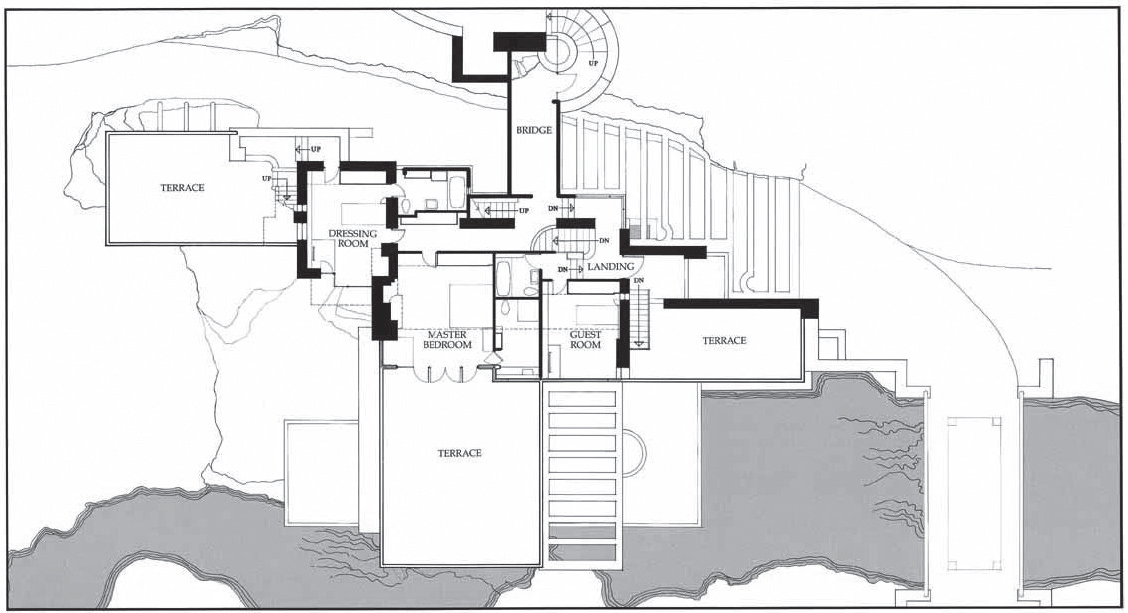
Figure 22.16c: Frank Lloyd Wright, Fallingwater, site plan
■The living room contains a glass curtain wall around three of the four sides; the building embraces the woods around it.
■The floor of the living room and the walls of building are made from the stone of the area.
■The hearth (physically and symbolically) is the center of the house, an outcropping of natural stones surrounds it.
■The interior shows a suppression of space devoted to hanging a painting; Wright wanted the architecture to dominate.
■The ground plan and design is irregular and complex.
■Only two colors used: light ochre for the concrete and Cherokee red for the steel.
Context
■Late expression of Prairie School ideas.
Function and Patronage
■Weekend retreat for the Kaufmann family, who owned a department store in Pittsburgh, Pennsylvania.
Content Area Later Europe and Americas, Image 139
Web Source http://www.fallingwater.org/
■Cross-Cultural Comparisons for Essay Question 1: Homes
–Jefferson, Monticello (Figures 19.5a, 19.5b)
–Ryoan-ji (Figures 25.2a, 25.2b, 25.2c)
–House of the Vettii (Figures 6.7a, 6.7b)
The International Style
Le Corbusier’s dictum that a house should be a “machine for living” sums up the International Style from the 1920s to the 1950s. Greatly influenced by the streamlined qualities of the Bauhaus, the International Style celebrates the clean spacious white lines of a building’s façade. The internal structure is a skeleton system which holds the building up from within and allows great planes of glass to wrap around the walls using ferroconcrete construction. A key characteristic is the lack of architectural ornament and an avoidance of sculpture and painting applied to exterior surfaces.
Le Corbusier, Villa Savoye, 1929, steel and reinforced concrete, Poissy-sur-Seine, France (Figures 22.17a, 22.17b)
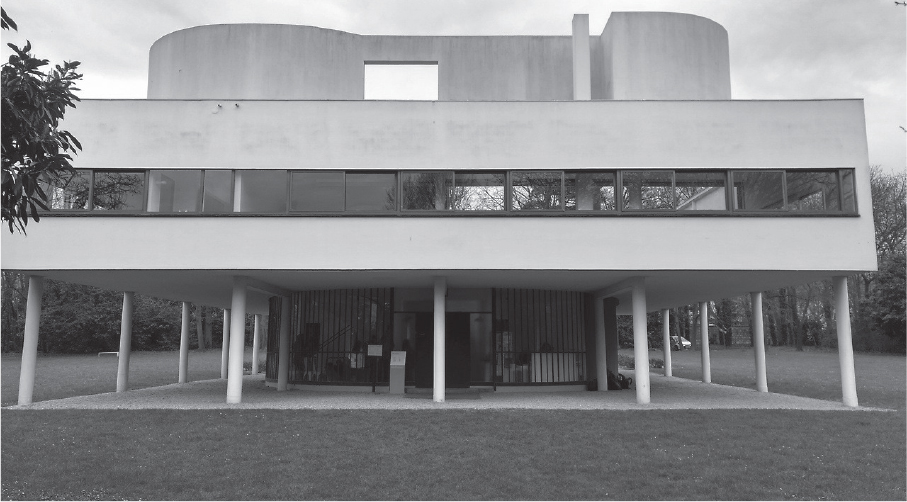
Figure 22.17a: Le Corbusier, Villa Savoye, 1929, steel and reinforced concrete, Poissy-sur-Seine, France

Figure 22.17b: Le Corbusier, Villa Savoye, 1929, steel and reinforced concrete, Poissy-sur-Seine, France
Form
■Boxlike horizontal quality; an abstraction of a house.
■The main part of the house is lifted off the ground by narrow pilotis—thin freestanding posts.
■The house appears to float on pilotis; allows air to circulate around the base of the house.
■The turning circular carport on the bottom floor enables family members to enter the house directly from their car.
■All space is utilized, including the roof, which acts as a patio.
■The roof terraces bring the outdoors into the house.
■Subtle colors: white on exterior symbolizes modern cleanliness and healthful living.
■Open interior is free of many walls.
■Some furniture is built into the walls.
■Ribbon windows wind around the second floor.
■Streamlined look.
■Living spaces that are surrounded by glass face an open courtyard-type setting on the second floor.
Function and Patronage
■A three-bedroom country house with servants’ quarters on the ground floor.
■Built in suburban Paris as a retreat for the wealthy.
■Patrons: Pierre and Emilie Savoye.
Context
■No historical ornamentation.
Content Area Later Europe and Americas, Image 135
Web Source http://greatbuildings.com/buildings/villa_savoye.html
■Cross-Cultural Comparisons for Essay Question 1: Houses
–House of the Vettii (Figures 6.7a, 6.7b)
–Alberti, Palazzo Rucellai (Figure 15.2)
–Wright, Fallingwater (Figures 22.16a, 22.16b, and 22.16c)
Ludwig Mies van der Rohe and Philip Johnson, Seagram Building, 1954–1958, steel frame with glass curtain wall and bronze, New York (Figure 22.18)
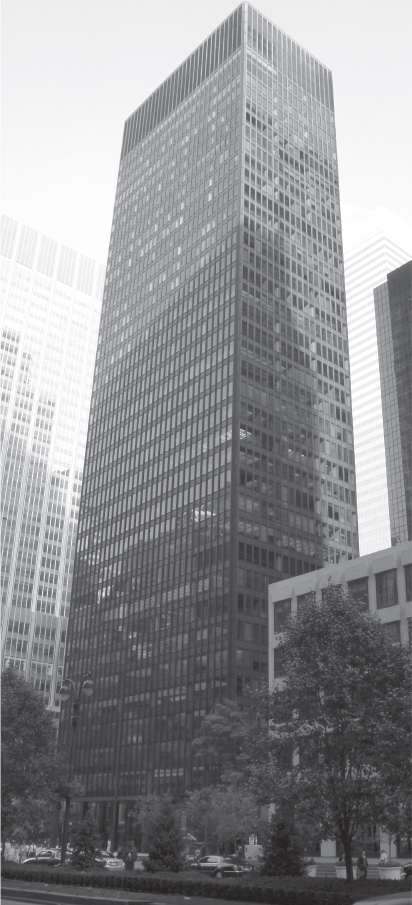
Figure 22.18: Ludwig Mies van der Rohe and Philip Johnson, Seagram Building, 1954–1958, New York
Function
■38-story corporate headquarters of the Seagram Liquor Company.
Form
■Bronze veneer gives the skyscraper a monolithic look; bronze is maintained yearly to keep the same color.
■Set back from Park Avenue on a wide plaza balanced by reflecting pools.
■Interplay of vertical and horizontal accents.
■Mullions stress the verticality of the internal frame.
Context
■Minimalist architecture.
■Monolith style expresses corporate power.
■Mies’s saying of “Less is more” can be seen in this building with its great simplicity, geometry of design, and elegance of construction.
■Mies also said, “God is in the details;” truthful buildings express their structure, not hide it.
■Steel and glass skyscrapers and curtain wall construction became the model after World War II.
■A triumph of the International Style of architecture.
Content Area Later Europe and Americas, Image 146
Web Source http://www.375parkavenue.com/
■Cross-Cultural Comparisons for Essay Question 1: Glass and Steel
–Sullivan, Carson, Pirie, Scott and Company Building (Figure 21.14)
–Hadid, MAXXI (Figure 29.2)
–Le Corbusier, Villa Savoye (Figure 22.17)
The Harlem Renaissance
In the early twentieth century African-Americans moved in great numbers to a New York City neighborhood called Harlem. This migration, and its subsequent infusion of talent, created a deep cultural center that reached its fullest expression in painting, theater, music, writing, and photography. The movement began after World War I, and reached its peak in the 1920s and early 1930s, but its influence extended well into the later twentieth century. The movement’s general themes, which extended across the arts, include racial pride, civil rights, and the influence of slavery on modern culture.
Jacob Lawrence, The Migration of the Negro, Panel no. 49, casein tempera on hardboard, 1940–1941, Museum of Modern Art, New York (Figure 22.19)
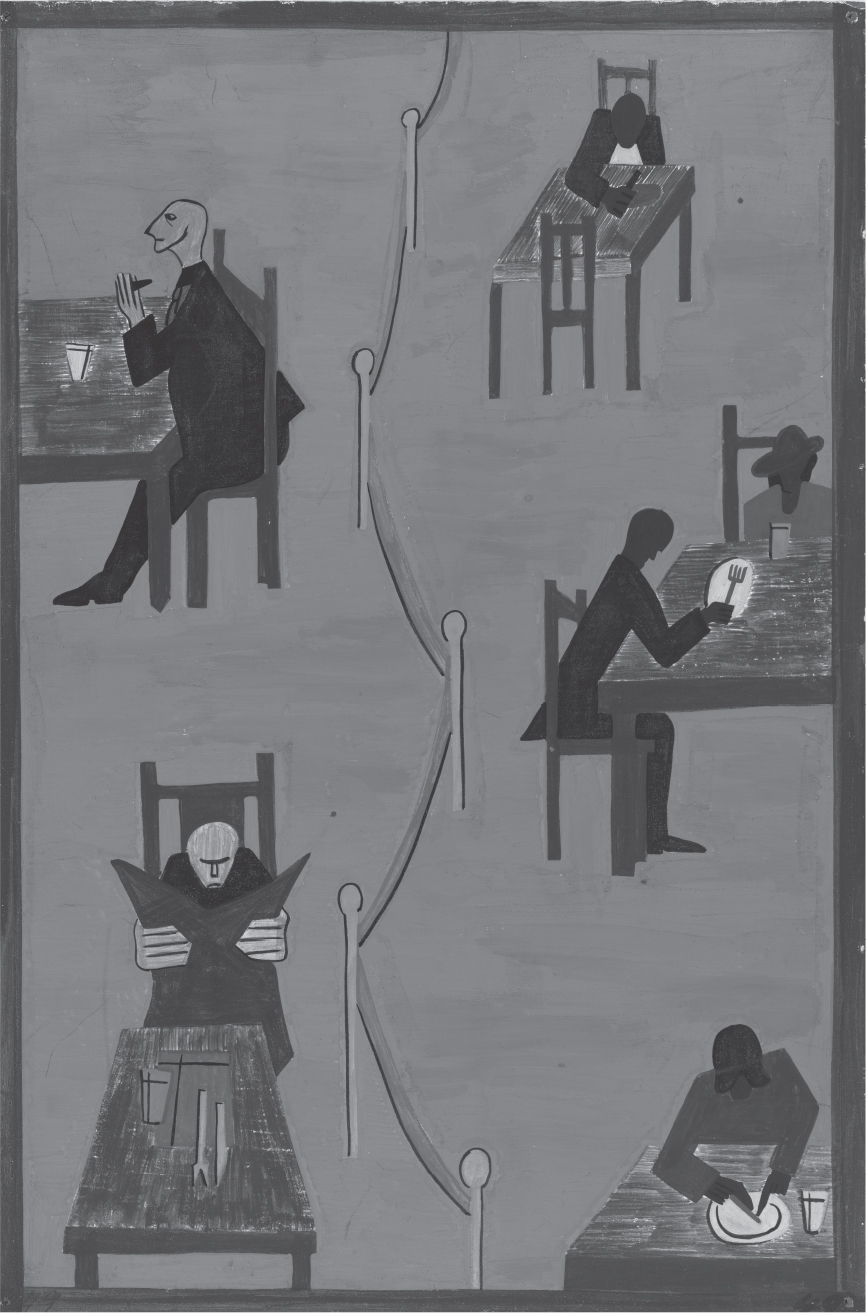
Figure 22.19: Jacob Lawrence, The Migration of the Negro, Panel no. 49, casein tempera on hardboard, 1940–1941, Museum of Modern Art, New York
Form
■The work illustrates the collective African-American experience; therefore, there is little individuality in the figures.
■Forms hover in large spaces.
■Angularity of forms.
■Tilted tabletops show the surface of the table.
■Flat, simple shapes.
■Unmodulated colors.
■Collective unity achieved by painting one color across many panels before going on to the next color; overall color unity in the series unites each painting.
Content
■This scene involves a public restaurant in the North; segregation emphasized by the yellow poles that zigzag down the center.
■Whites appear haughty and self-engrossed.
■African-Americans appear faceless; forms reveal their bodies and personalities.
Context
■One of a series of 60 paintings that depicts the migration of African-Americans from the rural South to the urban North after World War I.
■Negroes escaping the economic privation of the South.
■Narrative painting in an era of increasing abstraction.
■Cinematic movement of views of panels: some horizontal and others vertical.
■Influenced by the Italian masters of the fourteenth and fifteenth centuries; used tempera paint.
■The Phillips Collections in Washington, D.C., and the Museum of Modern Art in New York bought the collection and it was split. The Phillips took the odd-numbered paintings; the Museum of Modern Art has the even-numbered ones.
Content Area Later Europe and Americas, Image 141
Web Source http://www.phillipscollection.org/collection/migration-series
■Cross-Cultural Comparisons for Essay Question 1: Social Criticism
–Salcedo, Shibboleth (Figure 29.26)
–Smith, Lying with the Wolf (Figure 29.20)
–Quick-to-See-Smith, Trade (Figure 29.12)
Mexican Muralists
A major revival of Mexican art took place in the 1920s and 1930s by artists whose training was in the age-old tradition of fresco painting. Using large murals that all could see and appreciate, the Mexican Muralists usually promoted a political or a social message. These didactic paintings have an unmistakable meaning rendered in an easy-to-read format. The themes generally promote the labor and struggle of the working classes, and usually have a socialist agenda.
Diego Rivera, Dream of a Sunday Afternoon in the Alameda Park, 1947–1948, fresco, Museo Mural Diego Rivera, Mexico City (Figure 22.20)
Form
■50-foot-long fresco, 13 feet high.
■Horror vacui; didactic painting.
■Colorful painting.
■Revival of fresco painting, a Mexican specialty.
Placement
■Originally in the lobby of the Hotel del Prado.
■After a 1985 earthquake destabilized the hotel, the fresco was placed in a museum adjacent to Alameda Park, Mexico City’s first city park—built on the grounds of an Aztec marketplace.
Content
■Three eras of Mexican history depicted from left to right:
–Conquest and colonization of Mexico by the Spanish.
–Porfirio Diaz dictatorship.
–Revolution of 1910 and the modern world.

Figure 22.20: Diego Rivera, Dream of a Sunday Afternoon in the Alameda Park, 1947–1948, fresco, Museo Mural Diego Rivera, Mexico City
■Depicts a who’s who of Mexican politics, culture, and leadership:
–Sor Juana (Figure 18.6), in nun’s habit, at left center.
–Benito Juárez, five-term president of Mexico, left at top.
–General Santa Ana handing the keys of Mexico to General Winfield Scott.
–Emperor Maximilian and Empress Carlota.
–José Marti, father of Mexican independence (tipping his hat).
–General Porfirio Díaz, with medals, asleep.
–A police officer ordering a family out of an elitist park.
–Francisco Madero, a martyred president.
–José Posaro, artist and Rivera hero.
■Rivera is in the center, at age ten, holding hands with Caterina (“Death”) and dreaming of a perfect love (Kahlo is behind him holding a yin/yang symbol—a symbol of Kahlo and Rivera’s relationship).
Content Area Later Europe and Americas, Image 143
Web Source http://www.nytimes.com/1987/01/04/arts/rivera-mural-in-mexico-awaits-its-new-shelter.html
■Cross-Cultural Comparisons for Essay Question 1: Historicism
–Delacroix, Liberty Leading the People (Figure 20.4)
–Raphael, School of Athens (Figure 16.3)
–Olmec-style mask (Figure 26.5d)
Abstract Expressionism
Sometimes called The New York School, Abstract Expressionism of the 1950s is the first American avant-garde art movement. It developed as a reaction against artists like Mondrian, who took the Minimalist approach to abstraction. Abstract Expressionists seek a more active representation of the hand of the artist on a given work. Hence, action painting is a big component of Abstract Expressionism.
Willem de Kooning, Woman, I, 1950–1952, oil on canvas, Museum of Modern Art, New York (Figure 22.21)
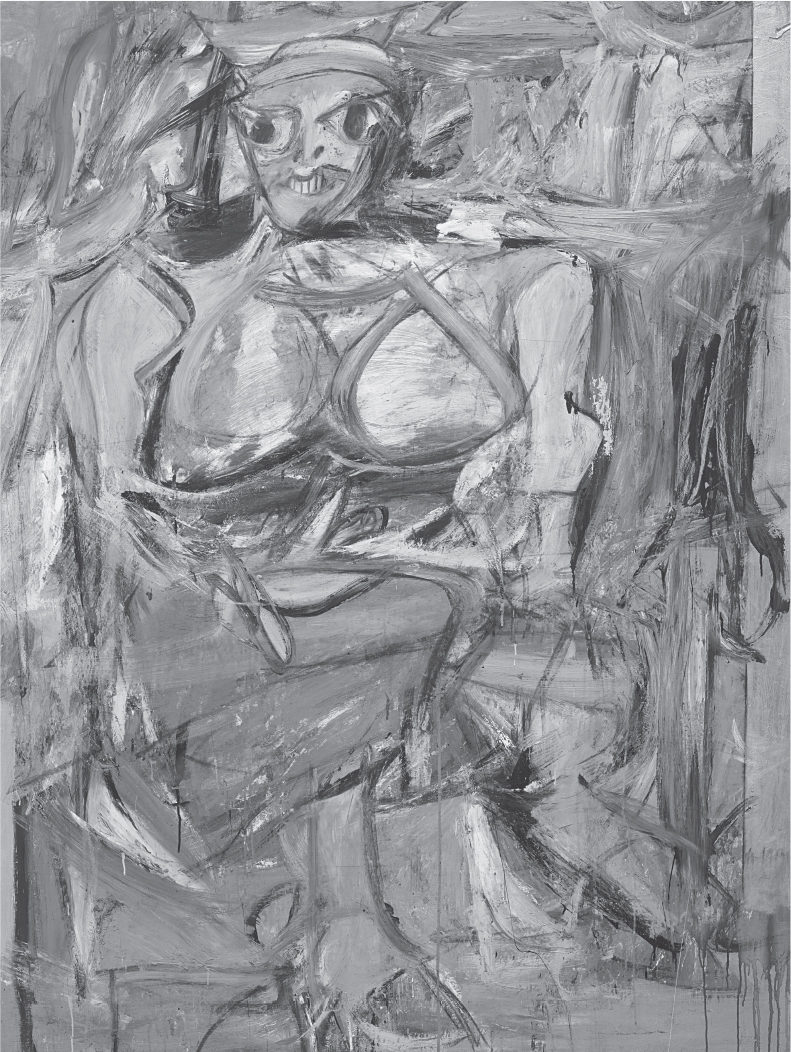
Figure 22.21: Willem de Kooning, Woman, I, 1950–1952, oil on canvas, Museum of Modern Art, New York
Form
■Ferocious woman with great fierce teeth and huge eyes.
■Large, bulbous breasts satirize women who appear in magazine advertising; smile said to be influenced by an ad of a woman selling Camel cigarettes.
■Jagged lines create an overpowering image.
■The smile is a cut out of a female smile from a magazine advertisement.
■Blank stare; frozen grin.
■Ambiguous environment: vagueness, insecurity.
■Thick and thin black lines dominate.
Context
■Combination of stereotypes; ironic comment on the banal and artificial world of film and advertising.
■Commentary on the female form in art history.
■Is she aggressive? Or have aggressions been committed against her? Or both?
■One of a series of six paintings on this theme.
■Influenced by everything from paleolithic goddesses to pin-up girls.
Content Area Later Europe and Americas, Image 145
Web Source https://www.moma.org/collection/works/79810
■Cross-Cultural Comparisons for Essay Question 1: Images of Women
–Manet, Olympia (Figure 21.3)
–Titian, Venus of Urbino (Figure 16.4)
–Neshat, Rebellious Silence (Figure 29.14)
Color Field Painting
Color field painting lacks the aggression of Abstract Expressionism. It relies on subtle tonal values that are often variations of a monochromatic hue. With Frankenthaler the images are mysteriously hovering in an ambiguous space. Other artists have a more clear-cut definition of forms with lines descending through the composition. Color field painting was popular in the 1960s.
Helen Frankenthaler, The Bay, 1963, acrylic on canvas, Detroit Institute of Arts, Detroit, Michigan (Figure 22.22)
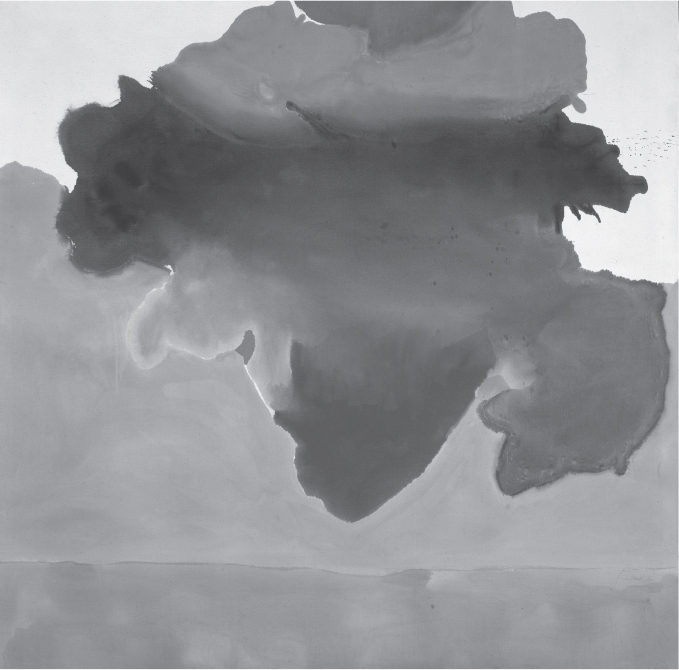
Figure 22.22: Helen Frankenthaler, The Bay, 1963, acrylic on canvas, Detroit Institute of Arts, Detroit, Michigan
Form
■Painted directly on an unprimed canvas; canvas absorbs the paint more directly.
■Use of runny water-based acrylic paint.
■Soak-stained technique.
■Use of landscape as a starting point, a basis for imagery in the works.
■The two-dimensionality of the canvas is accentuated.
Context and Interpretation
■Artist worked in the avant-garde New York School at mid-century.
Content Area Later Europe and Americas, Image 149
Web Source https://www.dia.org/art/collection/object/bay-45380
■Cross-Cultural Comparisons for Essay Question 1: Nature
–Su-nam, Summer Trees (Figure 29.6)
–Hokusai, the Great Wave (Figure 25.5)
–Bruegel, Hunters in the Snow (Figure 14.6)
Pop Art
Pop, or Popular, Art is a term coined by an English critic in 1955 about a movement that gathered momentum in the 1950s and then reached its climax in the 1960s. It draws on materials of the everyday world, items of mass popular culture like consumer goods or famous singers—the Pop artist saw no distinction between “high” art or the design of mass-produced items. It glorifies, indeed magnifies, the commonplace, bringing the viewer face to face with everyday reality. Most Pop artists proclaim that their art is not satirical, although sometimes this is hard to believe given the images they used and the scale used to display them. It is generally thought that Pop Art is a reaction against Abstract Expressionism.
Andy Warhol, Marilyn Diptych, 1962, oil, acrylic, silkscreen enamel on canvas, Tate Gallery, London (Figure 22.23)
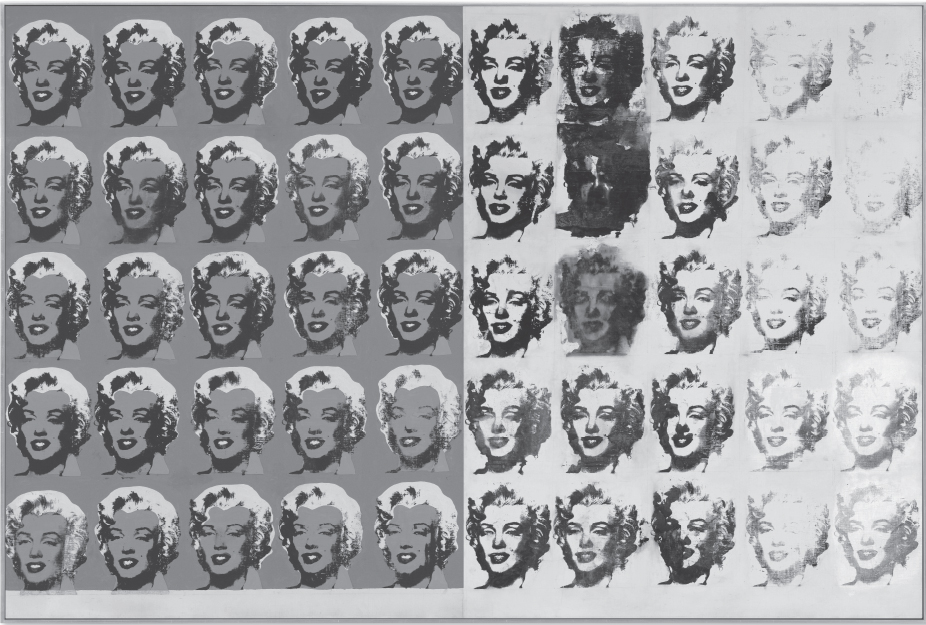
Figure 22.23: Andy Warhol, Marilyn Diptych, 1962, oil, acrylic, silkscreen enamel on canvas, Tate Gallery, London
Form and Content
■Marilyn Monroe’s public face appears sequentially as if on a roll of film.
■Fifty images from a film still from a movie, Niagara (1953).
■Social characteristics magnified: brilliance of blonde hair, heavily applied lipstick, seductive expression.
■Private persona of the individual submerged beneath the public face.
■Marilyn’s public face appears highlighted by bold, artificial colors.
■Left, in color, represents her in life; right, in black and white, represents her in death; work done four months after her tragic death.
■Repetition of faces reflects the repetition of the number of times Marilyn appeared before the public; sometimes overexposed, sometimes underexposed.
Materials and Technique
■Silkscreen printing technique applies photographic images in rectangular shapes onto a canvas background.
■Silkscreen diminishes the role of shading and emphasizes broad planes and unmodulated color.
■Diptych format suggests almost a religious presence.
Context
■Cult of celebrity; Monroe was a famous movie star of the 1950s.
■Private persona of Marilyn submerged beneath the public face(s).
■Repeated imagery drains the image of Monroe of meaning.
■Reproduction of many denies the concept of the unique work of art.
Content Area Later Europe and Americas, Image 147
Web Source http://www.tate.org.uk/art/artworks/warhol-marilyn-diptych-t03093
■Cross-Cultural Comparisons for Essay Question 1: Human Identity
–Tlatilco female figurine (Figure 1.5)
–Rodriguez, Spaniard and Indian Produce a Mestizo (Figure 18.5)
–Neshat, Rebellious Silence (Figure 29.14)
Claes Oldenburg, Lipstick (Ascending) on Caterpillar Tracks, 1969–1974, cor-ten steel, steel, aluminum, and cast resin, painted with polyurethane enamel, Yale University, New Haven, Connecticut (Figure 22.24)
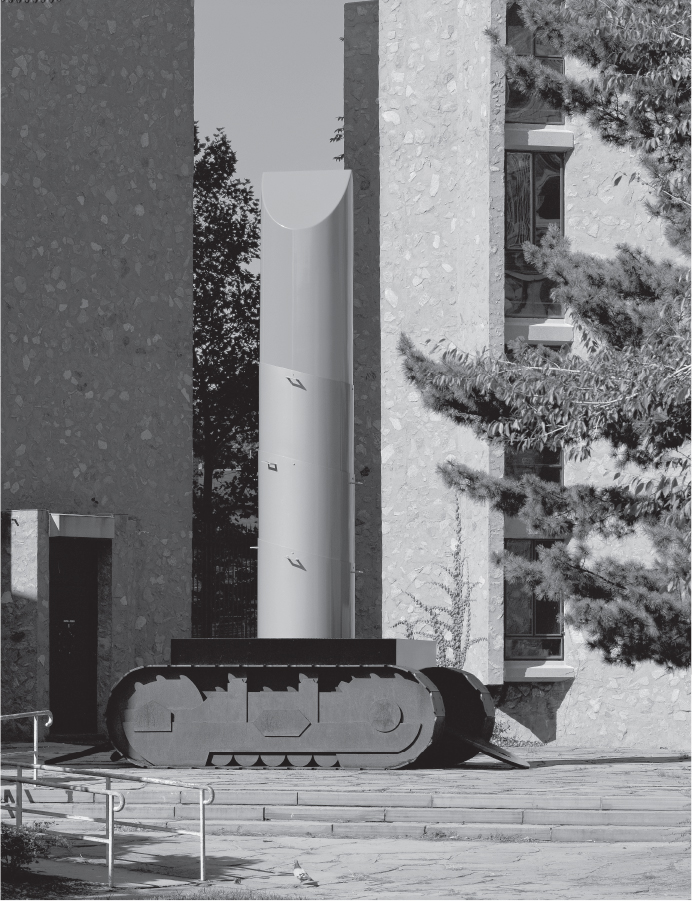
Figure 22.24: Claes Oldenburg, Lipstick (Ascending) on Caterpillar Tracks, 1969–1974, cor-ten steel, steel, aluminum, and cast resin, painted with polyurethane enamel, Yale University, New Haven, Connecticut
Function
■First installed, secretly, on Beinecke Plaza, New Haven, in 1969.
■Intended as a platform for public speakers; rallying point for anti-Vietnam-era protests.
Materials
■Sculpture made of inexpensive and perishable materials (plywood tracks and an inflatable vinyl balloon tip).
■Refurbished with steel and aluminum; reinstalled in 1974 in front of Morse College, at Yale—not its original location.
Context
■Tank-shaped platform base with lipstick ascending—antiwar symbolism.
■Male and female forms unite: themes of death, power, desire, and sensuality.
■First monumental sculpture by Oldenburg.
Content Area Later Europe and Americas, Image 150
Web Source http://oldenburgvanbruggen.com/largescaleprojects/lipstick.htm
Artist’s Website http://oldenburgvanbruggen.com/
■Cross-Cultural Comparisons for Essay Question 1: War and Battle Commemorations
–Column of Trajan (Figure 6.16)
–Lin, Vietnam Veterans Memorial (Figures 29.4a, 29.4b)
–Siege of Belgrade (Figures 18.3a, 18.3b)
HAPPENINGS
The word “happening” was coined in the late 1950s to describe an act of performance art that is initially planned, but involves spontaneity, improvisation, and often audience participation. Happenings continue today in various formats, including Flash Mobs, Improvisational Theater, and Performance Art.
Yayoi Kusama, Narcissus Garden, first seen in 1966, installation of mirror balls, Venice (Figures 22.25a and 22.25b)
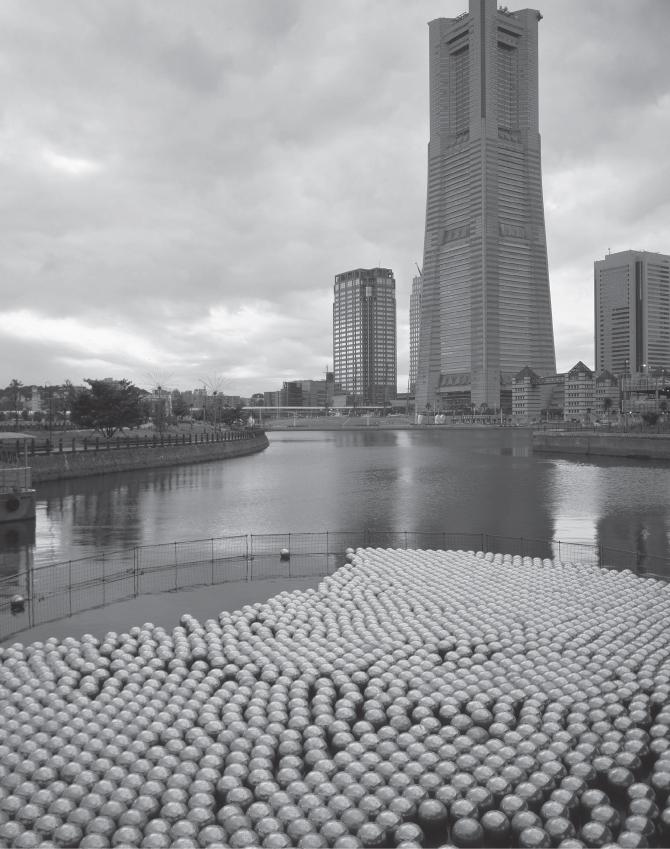
Figure 22.25a: Yayoi Kusama, Narcissus Sea, 2010, mirror balls, this installation at Yokohama Triennale entitled “Narcissus Sea.”
Function and History
■The artist originally featured the work as an uninvited participant in the 1966 Venice Biennale.
■Fifteen hundred large, mirrored, plastic balls were placed on a lawn under a sign that said “Your Narcissism for Sale.”
■The viewer is reflected seemingly into infinity in the mirrored surfaces.
■The artist offered the balls for sale for 1,200 lire ($2 each) as a commentary on the commercialism and vanity of the current art world.
■The installation later moved to water, where the floating balls reflect the natural environment—and the viewers—around the work; water placement makes a stronger connection to the ancient myth.
■Balls move with the currents of the water and wind, reflecting organically made, ever-changing viewpoints.
■The installation has been exhibited in many places around the world, both in water and in dry spaces
Context
■Narcissus Garden references the ancient myth of Narcissus, a young man who is so enraptured by his image in reflecting water that he stares at it indefinitely until he becomes a flower.
■There is a deeper meaning today as Narcissus Garden references modern obsessions with selfies and uploaded images on social media.
■Kusama is an internationally renowned Japanese-born artist:
–Got her start showing large works of art featuring huge polka dots.
–One of the foremost innovators of Happenings.
–Works in a wide variety of media, including installations.
Content Area Later Europe and Americas, Image 148
Artist’s Website http://www.yayoi-kusama.jp/
■Cross-Cultural Comparisons for Essay Question 1: Human Identity and Image
–Sherman, Untitled #228 (Figure 29.10)
–Wall plaque from Oba’s palace (Figure 27.3)
–Narmer Palette (Figures 3.4a and 3.4)
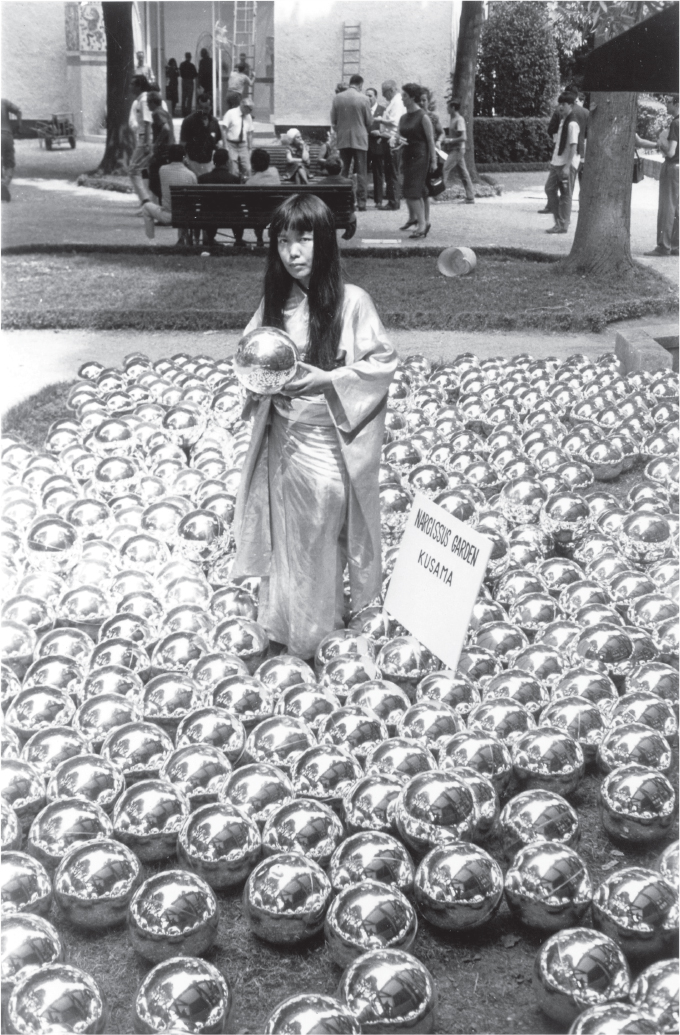
Figure 22.25b: Yayoi Kusama, Narcissus Garden, artist sells balls at the Venice Biennale, 1966
Site Art
Sometimes called Earth Art, Site Art is dependent on its location to render full meaning. Often works of Site Art are temporary, as in the works of Christo and Jeanne-Claude. Other times the works remain, but need the original environment intact in order for it to be fully understood. Such items are often called earthworks. Site Art dates from the 1970s and is still being done today.
Robert Smithson, Spiral Jetty, 1970, earthwork: mud, precipitated salt crystals, rocks, water coil, Great Salt Lake, Utah (Figure 22.26)

Figure 22.26: Robert Smithson, Spiral Jetty, 1970, earthwork: mud, precipitated salt crystals, rocks, water coil, Great Salt Lake, Utah
Form
■A coil of rock placed in a part of the Great Salt Lake that is in an extremely remote and inaccessible area.
■The artist liked the site because of the blood-red color of the water, which is due to the presence of bacteria and algae that live in the high-salt content.
Material
■The artist used a tractor to move basalt from the adjacent hillside to create the jetty.
Context
■Upon walking on the jetty, the twisting and curling path changes the viewer’s view from every angle.
■A jetty is usually a pier extending into the water; here it is transformed into a curl of rocks sitting silently in a vast, empty wilderness.
■The coil is an image seen in North American earthworks—cf. Great Serpent Mound, Ohio (Figure 26.4)—as well as in petroglyphs and Anasazi pottery.
■The work reflects emerging views of the environmental movement; Earth Day was inaugurated in 1970.
■Smithson wanted nature to have its effect on the jetty (sometimes it is submerged, sometimes it is visible).
Content Area Later Europe and Americas, Image 151
Artist’s Website http://robertsmithson.com/
■Cross-Cultural Comparisons for Essay Question 1: Spirals and Circular Constructions
–Christo and Jeanne-Claude, The Gates (Figures 29.3a, 29.3b)
–Great Serpent Mound (Figure 26.4)
–Stonehenge (Figures 1.12a, 1.12b)
POSTMODERN ARCHITECTURE
Postmodern architecture, generally thought to emerge in the late 1970s and early 1980s, sees the achievements of the International Style as cold and removed from the needs of modern cities with their cosmopolitan populations. Postmodernists see nothing wrong with incorporating ornament, traditional architectural expressions, and references to past styles in a modern context. Philip Johnson, himself a contributor to the International Style, as well as someone who worked on the Seagram Building (Figure 22.18), began the shift away to a Postmodern ideal with the AT&T building.
Robert Venturi, John Rauch, and Denise Scott Brown, House in New Castle County, 1978–1983, wood frame and stucco, Delaware (Figures 22.27a and 22.27b)
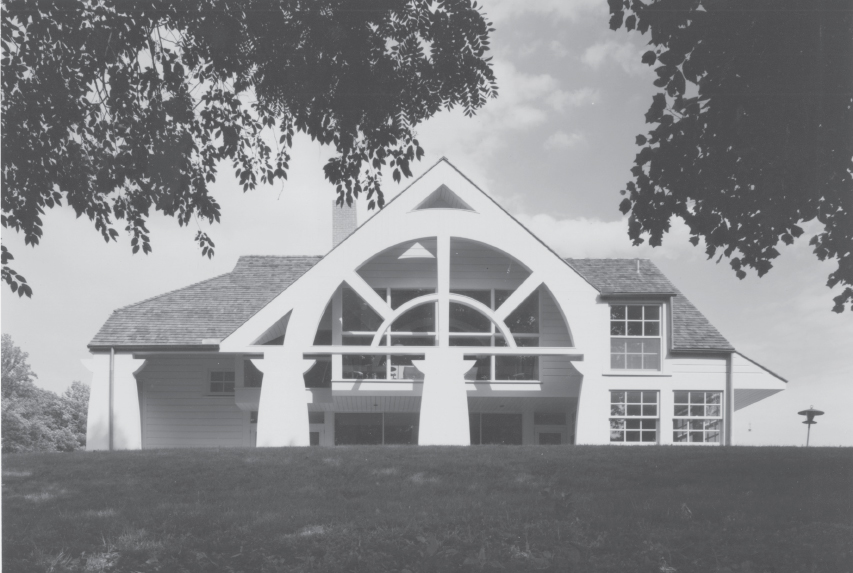
Figure 22.27a: Robert Venturi, John Rauch, and Denise Scott Brown, House in New Castle County, 1978–1983, wood frame and stucco, Delaware
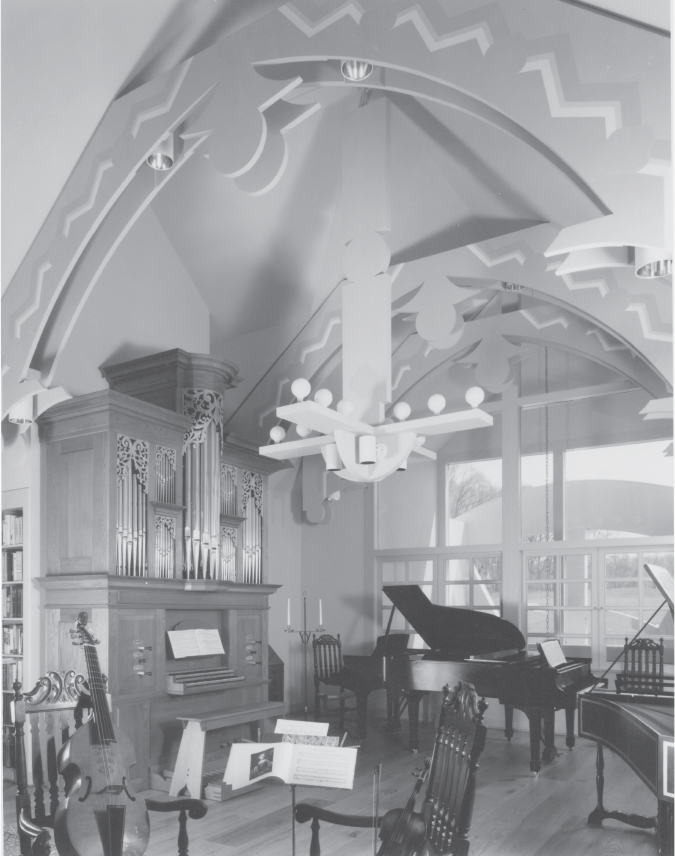
Figure 22.27b: Music Room of House in New Castle County
Form
■The façade contains an arch inside a pediment form.
■A squat, bulging Doric colonnade is asymmetrically placed.
■The columns are actually flat rather than the traditionally round forms.
■The drainpipe at the left bisects the outermost column.
■The flattened forms on the interior arches echo the exterior flat columns.
■The interior forms reflect a craftsman’s hand in curved, cutting elements.
Function
■The house was designed for a family of three.
■For the wife, a musician, a music room was created with two pianos, an organ, and a harpsichord.
■For the husband, a bird-watcher, large windows were installed facing the woods.
Context
■Postmodern mix of historical styles.
■Rural location in low hills, grassy fields of Delaware.
■Venturi’s comment on the International style: “Less is a bore.”
Content Area Later Europe and Americas, Image 152
Artist’s Website http://www.venturiscottbrown.org/
■Cross-Cultural Comparisons for Essay Question 1: Homes
–Jefferson, Monticello (Figures 19.5a, 19.5b)
–Alberti, Palazzo Rucellai (Figure 15.2)
–Le Corbusier, Villa Savoye (Figure 22.17)
VOCABULARY
Abstract: works of art that may have form, but have little or no attempt at pictorial representation (Figure 22.14)
Action painting: an abstract painting in which the artist drips or splatters paint onto a surface like a canvas in order to create the work
Assemblage: a three-dimensional work made of various materials such as wood, cloth, paper, and miscellaneous objects
Biomorphism: a movement stressing organic shapes that hint at natural forms
Cantilever: a projecting beam that is attached to a building at one end, but suspended in the air at the other (Figure 22.15)
Collage: a composition made by pasting together different items onto a flat surface
Color field painting: a style of abstract painting characterized by simple shapes and monochromatic color
Documentary photography: a type of photography that seeks social and political redress for current issues by using photographs as a way of exposing society’s faults
Earthwork: a large outdoor work in which the earth itself is the medium (Figure 22.26)
Ferroconcrete: steel reinforced concrete; the two materials act together to resist building stresses
Happening: an act of performance art that is intially planned but involves spontaneity, improvisation, and often audience participation
Harlem Renaissance: a particularly rich artistic period in the 1920s and 1930s that is named after the African-American neighborhood in New York City where it emerged. It is marked by a cultural resurgence by African-Americans in the fields of painting, writing, music, and photography
Installation: a temporary work of art made up of assemblages created for a particular space, like an art gallery or a museum (Figure 22.25b)
Mobile: a sculpture made of several different items that dangle from a ceiling and can be set into motion by air currents
Neoplasticism: a term coined by Piet Mondrian to describe works of art that contain only primary and neutral colors and only straight, vertical, or horizontal lines intersecting at right angles
Photomontage: The technique of creating an image by combining photographs, sometimes with other materials, to form a unified image (Figure 22.13)
Ready-made: a commonplace or found object selected and exhibited as a work of art
Silkscreen: a printing technique that passes ink or paint through a stenciled image to make multiple copies (Figure 22.23)
Venice Biennale: a major show of contemporary art that takes place every other year in various venues throughout the city of Venice; begun in 1895 (Figure 22.25b)
SUMMARY
Early modern art is characterized by the birth of radical art movements. Avant-garde artists, with the help of their progressive patrons, broke new ground in rethinking the traditional figure, and in the use of color as a vehicle of expression rather than description.
Artists moved in many directions; for example, abstract art was approached in entirely different ways by artists as diverse as Kandinsky and Mondrian. Other artists, such as Brancusi, come close to the abstract form, using representational ideas as a starting point. Still others, such as Surrealists, see conventional painting as a beginning, but expanded their horizons immediately after that.
Modern architects embrace new technology, using it to cantilever forms over open space, imitate the machine aesthetic of Art Deco, or espouse the complete artistic concept of the Bauhaus. Whatever the motivations, modern architecture is dominated by clear, clean, simple lines, paralleling some of the advances made in painting and sculpture.
PRACTICE EXERCISES
Multiple-Choice
1.Robert Smithson’s works, like Spiral Jetty, were inspired by
(A)Surrealist paintings
(B)Aztec temple structures and complexes
(C)Buddhist stupas and toranas
(D)American Indian earthworks
2.The Memorial Sheet for Karl Liebknecht commemorates a moment in the
(A)Franco-Prussian War of 1980
(B)Communist uprising in 1919
(C)erection of the Berlin Wall in 1961
(D)collapse of the Stock Market in 1929
3.Cuban artist Wifredo Lam sought to combine his Hispanic heritage with
(A)flat areas of color used in Japanese prints
(B)facial designs inspired by African masks
(C)abstract patterning popularized by painters of the New York School
(D)found objects used by the Dadists
4.Alfred Stieglitz’s photographs have been compared to
(A)Surrealist paintings because of their odd juxtapositions
(B)Cubist paintings because of the tonal values and the arrangement of shapes
(C)Impressionist paintings because of their atmospheric effects
(D)Realist paintings because of the concentration on the plight of the hard-working poor
5.Constructivists were highly influenced by
(A)political unrest in Germany as a result of World War I
(B)social ferment in the African-American community in Harlem, New York
(C)the rise of the industrial complex in Russia that Communists saw as a way toward a modern state
(D)the philosopher André Breton and the organizing principles of Surrealist art
Short Essay
Practice Question 3: Visual Analysis
Suggested Time: 15 minutes
This work is Yayoi Kusama’s Narcissus Sea.
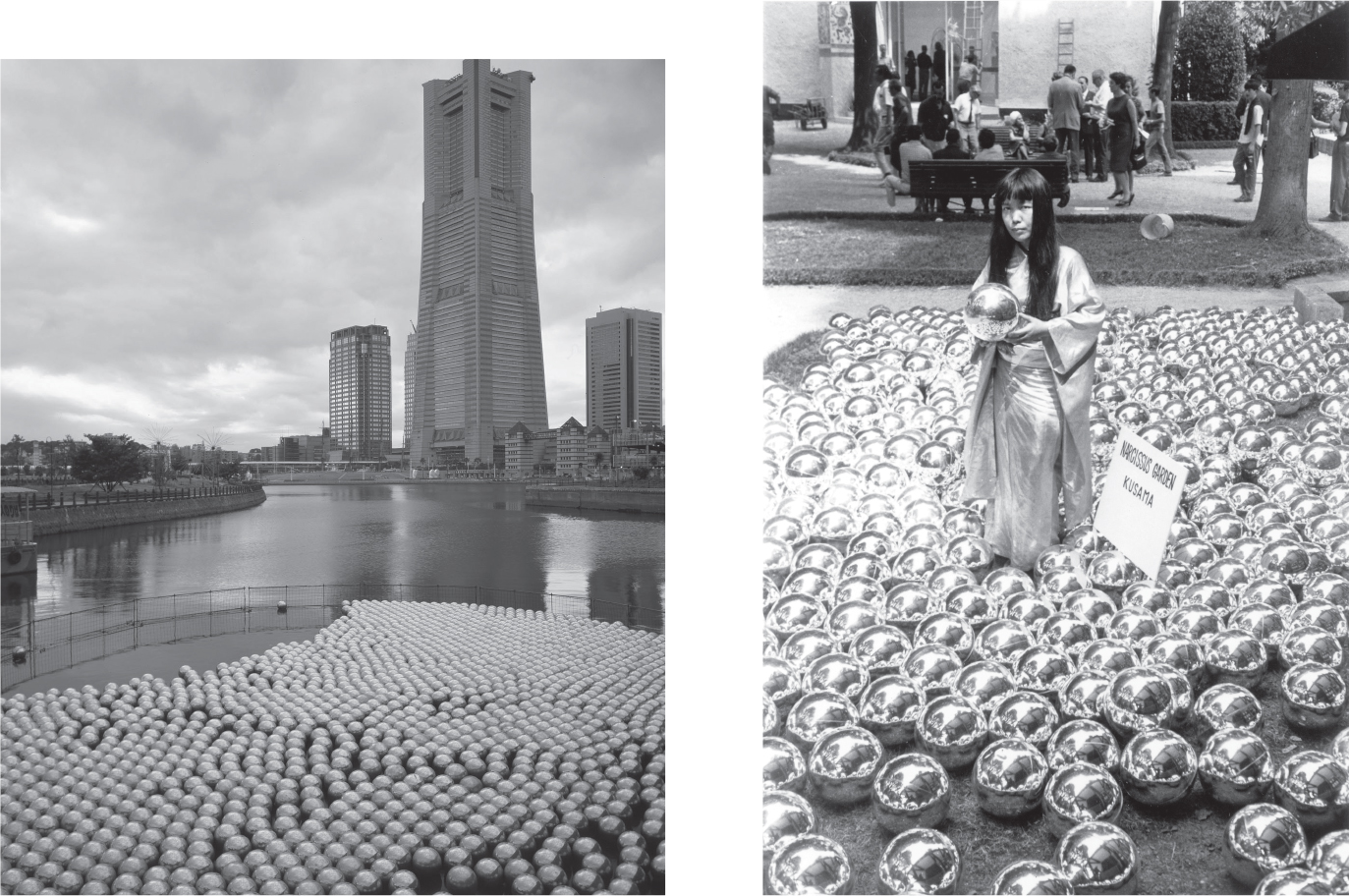
Where was the original version of this work first shown?
How is this work, as seen here, different from the prior installation?
Discuss why this work caused a scandal when it was first shown.
Using specific visual evidence, discuss at least two examples of how the media used in this work has created a variety of interpretations.
ANSWER KEY
1.D
2.B
3.B
4.B
5.C
ANSWERS EXPLAINED
Multiple-Choice
1.(D) The circular patterns seen in such earthworks as Great Serpent Mound formed a general inspiration for Smithson’s works.
2.(B) The Memorial Sheet for Karl Liebknecht commemorates a moment in the Communist uprising in 1919 in Berlin, Germany.
3.(B) Cuban artist Wifredo Lam was influenced by African masks. Cuban ancestry is a mixture of European and African heritages, and his work often mirrors that combination.
4.(B) The development of Cubism is simultaneous with Stieglitz’s experiments in photography. There is a strong parallel between Cubism’s refined artistic palette and the subtle tonal shades in Stieglitz’s photographs. Moreover, there is a comparison between Cubism’s sharp angles and thoughtful compositional varieties in Stieglitz.
5.(C) Constructivism was a Russian movement that celebrated the rise of the industrial complex in the service of the state.
Short Essay Rubric
Task |
Point Value |
Key Points in a Good Response |
Where was the original version of this work first shown? |
1 |
The artist originally featured the work as a nonparticipant in the 1966 Venice Biennale. |
How is this work, as seen here, different from the prior installation? |
1 |
Answers could include: ■The initial installation was on grass; most subsequent installations have been on water. ■The initial installation had the artist present selling the balls; subsequent installations have not had balls for sale, and the artist has not been present. ■The initial installation was done as a commentary on the Venice Biennale and on the art world in general; subsequent installations have carried a broader message. |
Discuss why this work caused a scandal when it was first shown. |
1 |
Answers could include: ■1,500 large, mirrored, stainless steel balls placed on a lawn under a sign that said, “Your Narcissism for Sale.” ■Artist offered the balls for sale for 1,200 lire ($2 dollars each) as a commentary on the commercialism and vanity of the current art world. ■The artist was not invited to participate in the official biennale, but came anyway. |
Using specific visual evidence, discuss at least two examples of how the media used in this work has created a variety of interpretations. |
2 |
Answers could include: ■Narcissus Garden references the ancient myth of Narcissus, a young man who is so enraptured by his image in reflecting water that he stares at it indefinitely until he becomes a flower. ■This installation was later moved to water, where the floating balls reflect the natural environment—and the viewers; water placement makes a stronger connection to the ancient myth. ■Balls move with the current of the water and wind, reflecting ever-changing viewpoints. ■The installation has been exhibited in many places around the world, both in water and in dry spaces. |